|

HOME |
ABOUT |
INDEX |
NEWS |
FACEBOOK |
CONTACT
DISABILITY
Accessibility | Impaired | Challenged | Special Needs
Marissa Bode:
Queer and Disabled
She Plays Nessarose in the Film Adaptation of Wicked
Marissa
Bode became paralyzed from the waist down after a car
accident at age 11, which led her to become a wheelchair
user. She also makes history by being the first actress
who uses a wheelchair in real life to play the role of
Nessarose in the film adaptation of Wicked.
The big screen adaptation of Wicked is even queerer than
some fans may have realized. Back before Wicked hit US
theaters, it was reported that Marissa Bode had been in
a relationship with journalist Lauren Brooks since
September 2023. They were seen together in Los
Angeles at the film premiere and at the SAG Awards.
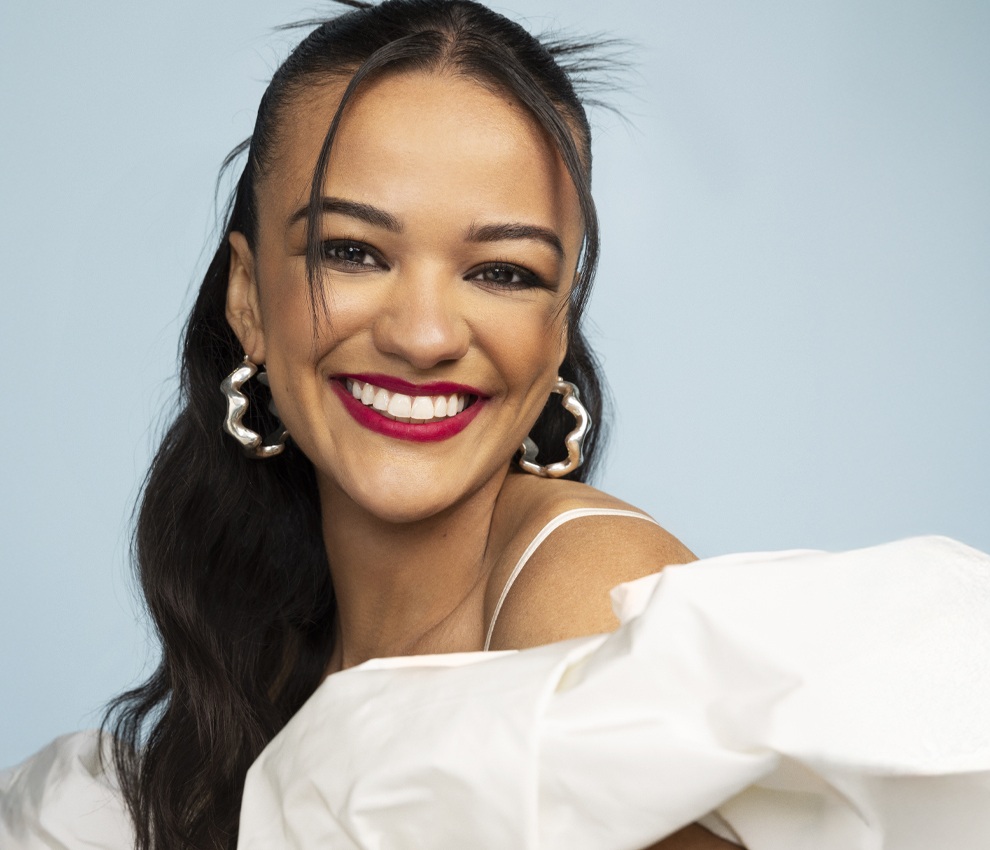
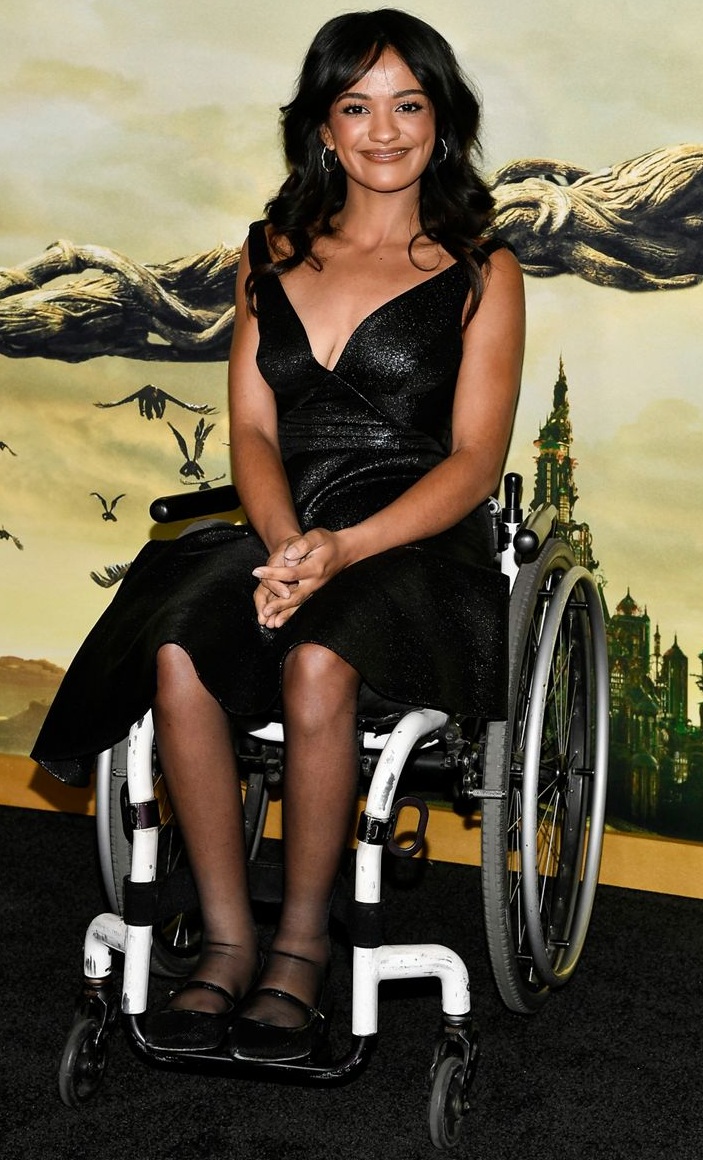
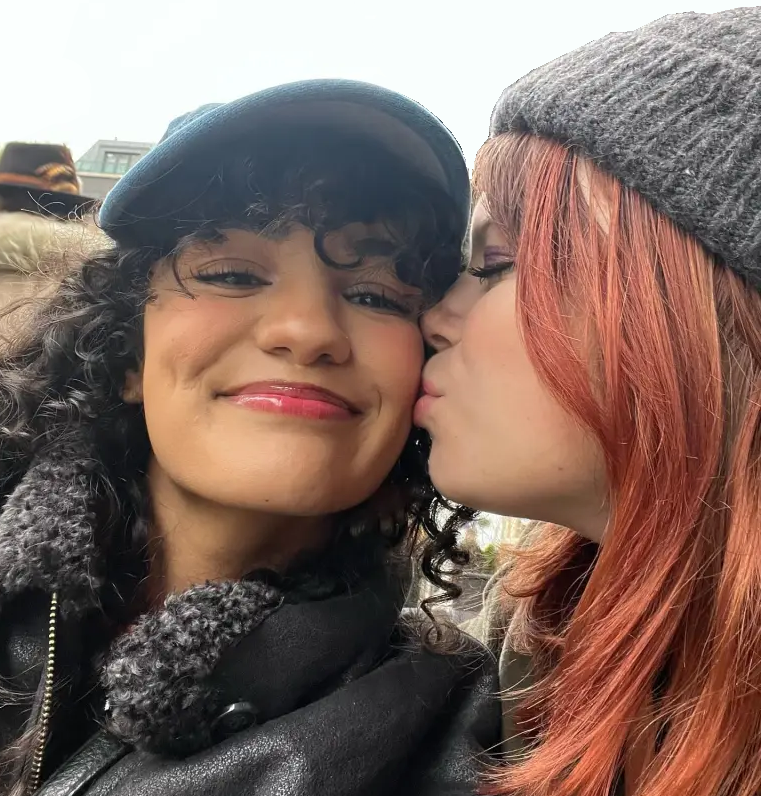
Marissa Bode Dives into Wicked, Disability
Representation, and Finding Herself
Wicked’s Marissa Bode on Making History as Nessarose
Marissa Bode Hopes Wicked Makes the World Safer for Her
and Her Girlfriend
Another Queer Wicked Star
All About Marissa Bode and Lauren Brooks
Wicked Fans Thrilled to Learn Marissa Bode is in a Queer
Relationship
Marissa Bode Interview: Wicked Is Only the Beginning
The film is based on the long-running, Tony-winning
Broadway musical that has fueled a million drag
performances with its signature tune, “Defying Gravity.”
It’s also based on out author Gregory Maguire’s 1995
novel, which in turn draws inspiration from the queer
classic The Wizard of Oz. And the blockbuster movie also
stars out actors Cynthia Erivo, Jonathan Bailey, and
Bowen Yang alongside vocal LGBTQ ally Ariana Grande.
Wicked marks Bode’s film debut. In the movie, she plays
Nessarose, the sister of Erivo’s Elphaba and the future
Wicked Witch of the East. Like her character, Bode uses
a wheelchair. She is the first actor who uses a
wheelchair in real life to play Nessarose.
[Source: John Russell, LGBTQ Nation]
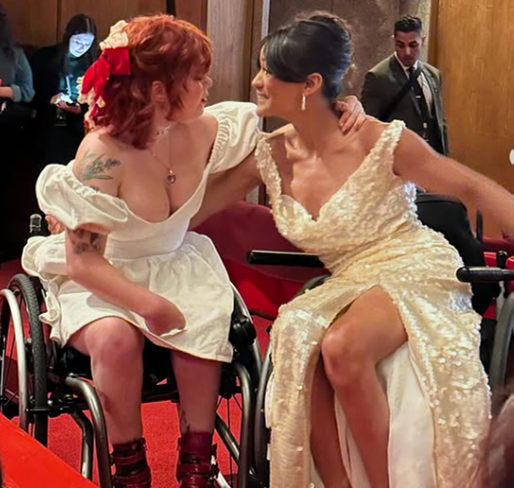
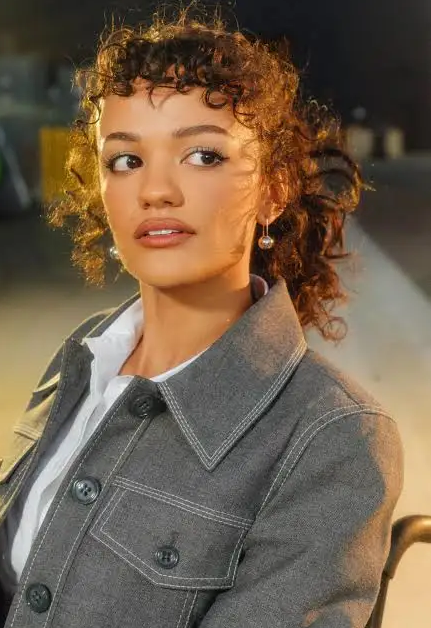
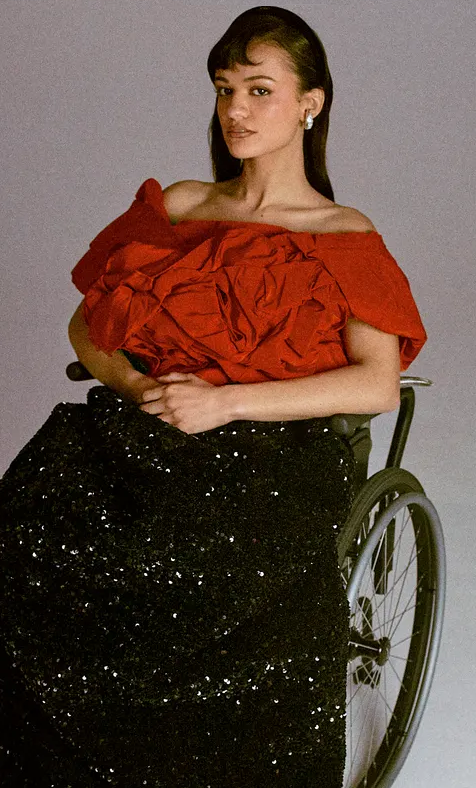
LGBTQ Disability Activists Who are Changing the World
One Fight at a Time
Autistic LGBTQ Public Figures Providing Essential
Representation
Team LGBTQ Currently Has 10th Most Golds at Paris
Paralympics
Hailey Danz Wins Triathlon at Her Third Paralympics,
Giving Team LGBTQ its Fifth Gold in Paris
Italian Sprinter Valentina Petrillo: First Out
Transgender Paralympian
Alex Mitchell on
BGT: Gay and Autistic
Films and Shows With Messy, Amazing, Real
LGBTQ Disabled Characters
Author Lucy Webster: Similarities Between Experiences of
Being Queer and Being Disabled
Deaf YouTuber and Her Wife Go Viral Sharing Their
Remarkable Family Journey
Dickie Hearts: Paving the Way for a Rainbow of Deaf
Stories
Addressing
Disability Within the LGBTQ Community
Let Go of
Stereotypes
One of the
nice things about being part of the LGBTQ community is
that it’s incredibly diverse. Yet diversity isn’t just
about race, of course. Issues of disability can pop up
in the community, leaving room for very awkward pauses.
The truth is that we have to do more than just tolerate
people with disabilities. We have to embrace them as
full-fledged members of this community. People assume
that someone with a disability doesn’t have any interest
in relationships, but that couldn’t be further from the
truth. In reality, it makes sense. Say you lose your arm
tomorrow. Does this mean that you no longer have a
desire to be with your gay partner? Not at all.
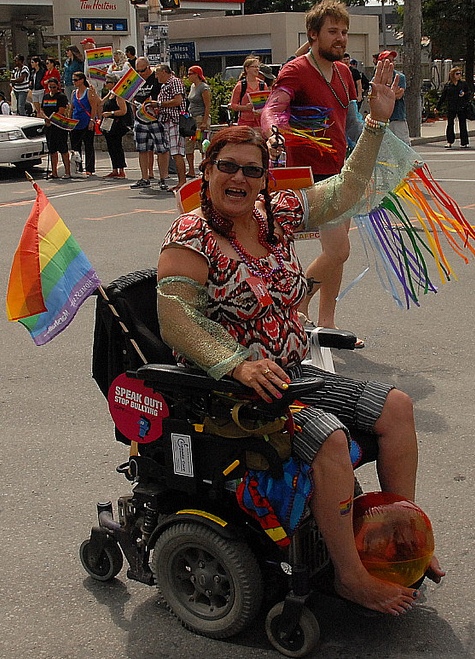
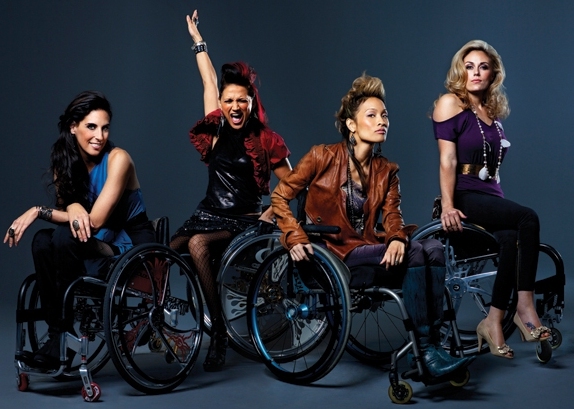
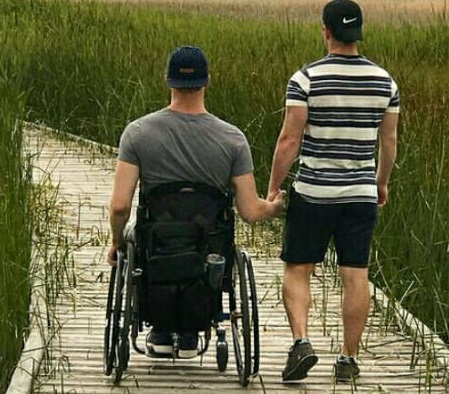
Mother of Disability Rights Movement, Judy Heumann Dies
at 75
Disabled LGBTQ Activists and Advocates Who You Need to
Know
Daniel Durant Celebrates Deaf and LGBTQ Communities on
DWTS
Nyle DiMarco: Role Model for Deaf and LGBTQ Communities
Tokyo Paralympic Games Welcomes Record Number of LGBTQ
Athletes
Jillian Mercado on Repping Queer Disabled Latinx
Visibility
LGBTQ People Living With Disabilities
Disabled LGBTQ Creatives Imagine a Better
Tomorrow
It’s a great idea to start looking at disability issues,
because it’s up to all of us to be great advocates for
each other. The more attention that you give towards
handling everyone with respect, the more likely it is
that respect will be paid back to you. Here are some
tips to keep in mind if you’re going to be a strong
advocate for disabled LGBTQ people.
Let Go of Stereotypes - Hollywood is full of stereotypes
with disabled people. Not every disabled person wants to
break world records or stand out. They’re regular people
living everyday lives, and they want their feelings
respected. Assuming that someone lives a wildly radical
life simply because they’re disabled is disrespectful.
Instead of stereotypes, focus on what they want as
individuals.
Be a Great Listener - This is a great chance to hear how
someone else lives. You can be a great friend as long as
you’re willing to never stop learning and keep an open
mind. This isn’t the time to go on some big long rant
just because you feel like you have a “captive”
audience. Hear the other person out and be sure to ask
questions only after they’re done talking. Giving them a
chance to speak up is great because we never really know
what someone is going through, or feeling.
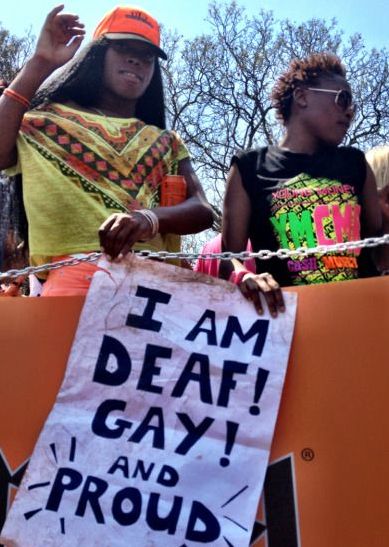
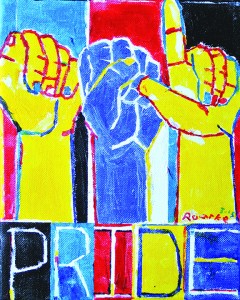
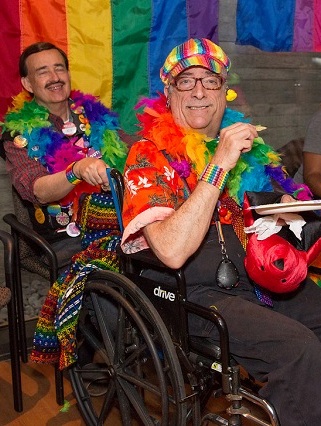
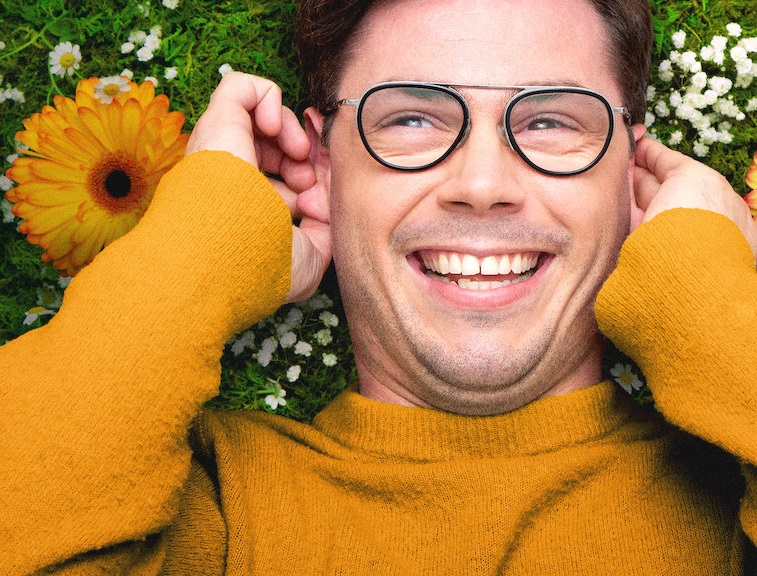
LGBTQ and Disabled Communities: Social Struggles We
Share
Gay Autistic
Comedian
Disabled LGBTQ Characters From TV Shows We Love
Irish LGBTQ Paralympian Katie-George Dunlevy Wins Silver
at Paris Games
USA Paralympic Volleyball Star Monique Matthews:
Champion for Trans Visibility
Meet the Triathlete Who Just Happens to be Transgender
and Deaf
Gay with Cerebral Palsy: Too Gay for Disabled
People, Too Disabled for the Gays
Video Roundtable: Disability, Sex, Relationships, Dating
Inter-Abled Relationships: Benefits of Dating a Disabled
Person
You Need to Calm Down: Sign Language
Netfilx Series: Queer and Disabled
Stand Up For Their Real Life
Want to know a secret?
The life of gay people doesn’t differ all that much just
because disability is involved. So why then is the
community often too silent when it comes to people with
disabilities? We assume and act like their lives are
completely different, when that isn’t the case. At the
end of the day, they deserve the same rights that we’re
fighting for. They have other issues that they have to
face because they are disabled, and this means that they
deserve good allies.
However, there has to be a balance between the two
points as well. Just as you don’t want to be
disrespectful, you also don’t want to assume that
everyone needs your help. It’s important to keep this to
the individual at hand, rather than what you think they
need. They will speak up and let you know, believe us.
Keeping these tips in mind encourages not just open
communication, but a true exchange of ideas. You can’t
have that without respect being at the start of
everything. People dealing with disabilities just want
to feel like they’re truly part of the community, rather
than just a convenient talking point when you want to
win an argument. Don’t ignore these tips if there is a
chance for genuine communication and sincere connection.
You won’t regret it!

Out Gay Rowing Champion Lauren Rowles Celebrates New
World Best Time at Paralympics
Matthew and Paul
Black, Gay, Autistic and
Beautiful
Films and Shows With Messy, Amazing, Real
LGBTQ Disabled Characters
Dark Disabled Stories:
Hard Truths About Queer People With Disabilities
Deaf Queer Resource
Center
Being Blind and Gay
Alex Mitchell on
BGT: Gay and Autistic
Meet the Same-Sex Parents Advocating for
LGBTQ and Disability Rights
Queer and Trans Creators with Disabilities Fighting for
an Accessible World
Jessica: Disabled and Gay
Embracing My Queer
Disabled Identity
MAP Report: LGBTQ People With Disabilities
Author Lucy Webster: Similarities Between Experiences of
Being Queer and Being Disabled
Try Smiling
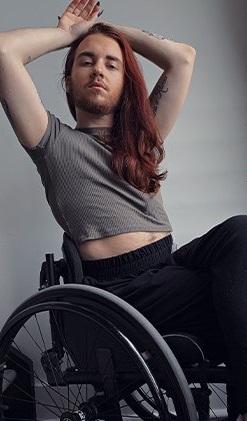
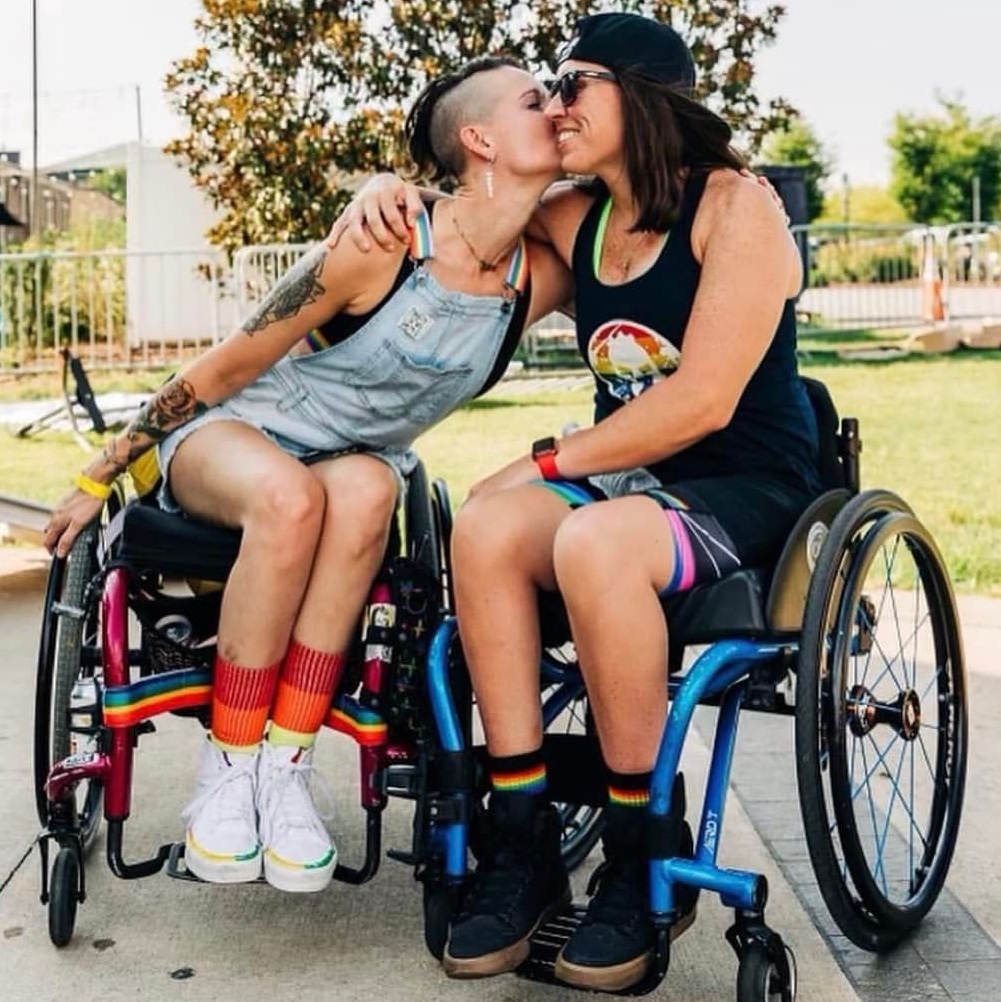

Books
Notes From
a Queer Cripple by Andrew Gurza
Eyes of
Desire: Deaf Gay and Lesbian Reader by Raymond Luczak
Do You
Dream in Color by Laurie Rubin
Mean
Little Deaf Queer by Terry Galloway
Queer
Crips: Disabled Gay Men and Their Stories by B. Guter
and JR Killacky
My Life as
a Deaf Gay Man by Peter Beach Morier
Captive
Genders: Trans Embodiment and the Prison Industrial
Complex by Eric A. Stanley and Nat Smith
Crip
Theory: Cultural Signs of Queerness and Disability by
Robert McRuer
Feminist,
Queer, Crip by Alison Kafer
Normal
Life: Administrative Violence, Critical Trans Politics
and The Limits of Law by Dean Spade
Black on
Both Sides: A Racial History of Trans Identity by C.
Riley Snorton
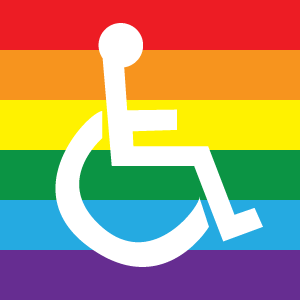
Films/Shows
T11 -
Written and directed by Suzanne Guacci
Special - Written by Ryan O'Connel, Executive Producer
Jim Parsons
Margarita with a Straw - By Shonali Bose
Euphoria - Starring Zendaya
Concerto
for Abigail - Starring Andrea Bogart, Monica Young
LGBTQ and Disabled Communities: Social Struggles We
Share
LGBTQ Disability Activists Who are Changing the World
One Fight at a Time
Gay Autistic
Comedian
Disabled LGBTQ Characters From TV Shows We Love
Queer and Disabled: Misconceptions
Alex Mitchell on
BGT: Gay and Autistic
Autistic LGBTQ Public Figures Providing Essential
Representation
Italian Sprinter Valentina Petrillo: First Out
Transgender Paralympian
Meet the Triathlete Who Just Happens to be Transgender
and Deaf
Deaf YouTuber and Her Wife Go Viral Sharing Their
Remarkable Family Journey
Dickie Hearts: Paving the Way for a Rainbow of Deaf
Stories
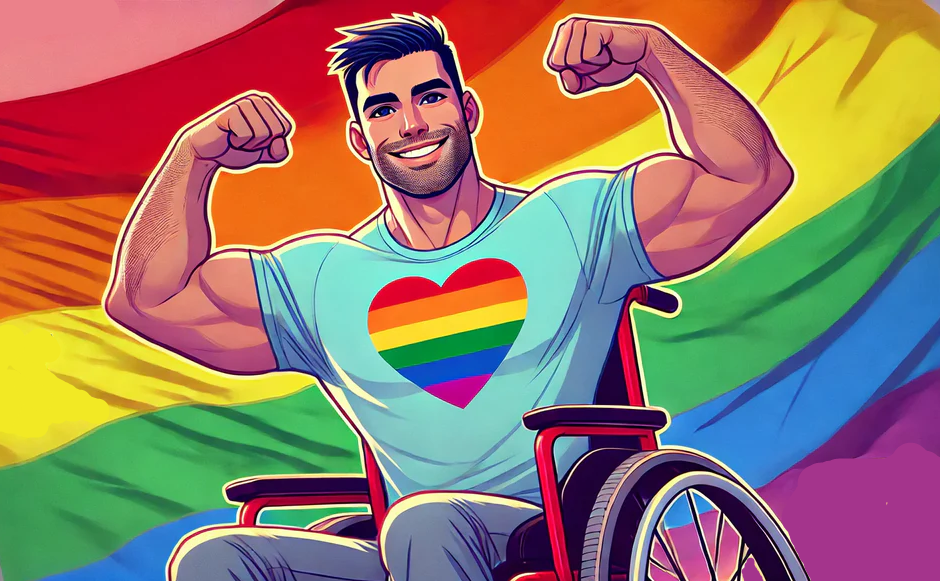
Terminology of
the Disabled Community
Respectful Language
PWD -
Person With a Disability - The correct term is a matter
of preference, but "person with a disability"
(people-first language) is widely accepted and
recommended. However, "disabled person" (identity-first
language) is also preferred by many individuals and
groups as a way to embrace disability pride and
identity. The key is to respect individual preferences
and avoid outdated terms like "the disabled" or "the
handicapped."
Use:
Person with a disability, people with disabilities,
individuals with [condition], accessible [facility].
Avoid: Handicapped, special needs, victim, invalid,
afflicted with, brain damaged, normal
Focus on Barriers: Emphasize societal barriers, not
inherent deficits. Example: "accessible parking" instead
of "handicapped parking"
Types:
Includes physical, sensory (vision/hearing),
intellectual, cognitive, mental, and chronic health
conditions.
Invisible Disabilities: Conditions like chronic fatigue,
brain injuries, or learning differences aren't always
apparent but still limit life activities.
People-first language (PFL)
Use: "A person with a disability," "people with
disabilities".
Why: This puts the person before the disability,
emphasizing the individual rather than the condition.
Examples: "A student with dyslexia" or "a person who
uses a wheelchair" or "a student with a learning
difference"
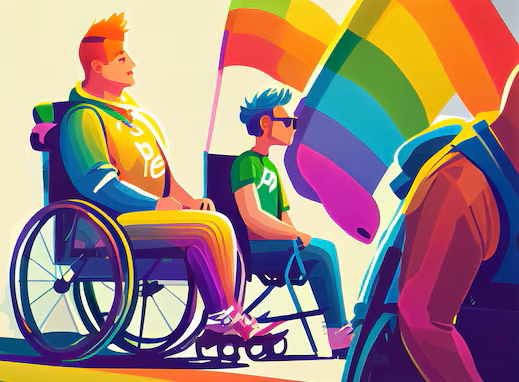
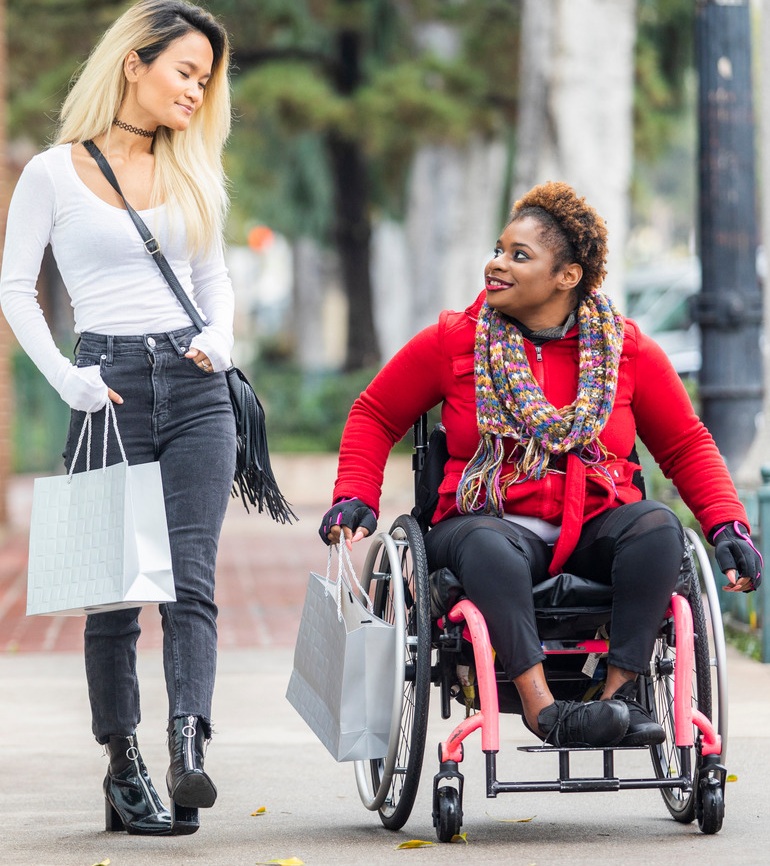
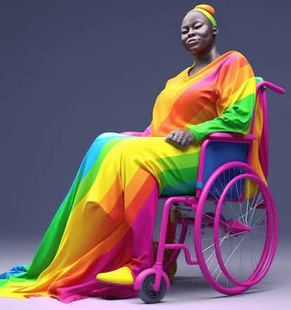
Identity-first language (IFL)
Use: "Disabled person," "disabled people"
Why: Some people prefer this because they view
disability as an integral part of their identity and a
shared cultural experience.
Examples: "Disabled person" or "Deaf person" (with a
capital "D" to signify culture) or "Autistic person" (or
Deaf culture or Autistic community)
When in doubt, use people-first language: If you are
unsure, "person with a disability" is a safe and
respectful choice that is widely accepted.
Avoid offensive language
Examples
of offensive terms: mad, freak, psycho, insane, retard,
lame, imbecile, crazy. Even as a joke, don’t call
someone “a retard” or “retarded” if they do something
silly. Other examples include asking someone jokingly,
"What's wrong with you" or "Are you deaf?" or "Are you
blind?"
Describing people without disabilities
Do not use
words that suggest undesirable stereotypes of people
with disability. When describing people without
disabilities, don’t use terms like normal, healthy,
able-bodied. Instead, use “non-disabled” or “people
without visible disabilities.” Such terms are more
accurate, because we often cannot tell whether someone
has a disability just by their physical appearance.
Disabled LGBTQ Activists Redefining Sex and Sexuality
Respect Ability: One-Third of LGBTQ Adults Have a
Disability
Jessica Kellfren-Fozard: Gay and Deaf
Scholarly Paper:
Intersectionality of Disabilities and LGBTQ Identity
Rainbow Alliance for
the Deaf
Groundbreaking Queer Autistic Characters paving the Way
for Visibility
Deafies in Drag
Man With Cerebral Palsy Recalls First Experience At Gay
Bar
Video Talk: Disabled LGBTQ Couple
Meet the Same-Sex Parents Advocating for
LGBTQ and Disability Rights
Author Lucy Webster: Similarities Between the
Experiences of Being Queer and Being Disabled
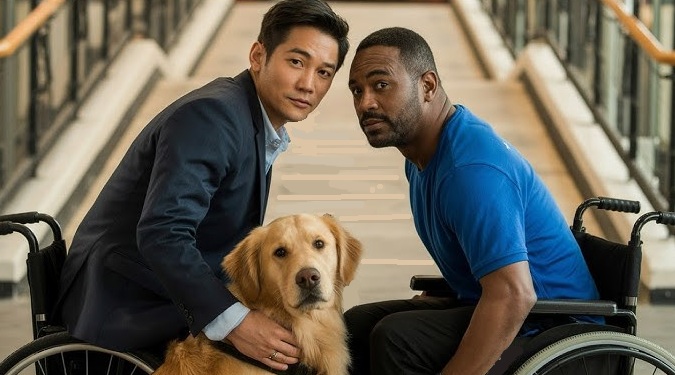
PWD
Dictionary
Disabled Community Terminology
Able-bodied, Normal - Use “non-disabled” or “person
without disability.” Referring to someone who does not
have a disability as a “normal person” implies that
people with disabilities are strange or odd. Use
“normal” only in medical/scientific context such as
“normal test result” or “normal growth.”
Abnormal - Use “atypical”, “disabled person” or “person
with disability.” Use abnormal only in a
medical/scientific setting like “abnormal curvature of
bone.” Avoid using the word “abnormal” to describe
people.
Addict, Alcoholic, Junkie - Use “someone with a
drug/alcohol addiction” or “someone with alcoholism.”
Addiction is a neurobiological disease which “impaired
control over drug use, compulsive use, and continued use
despite harm and/or craving.” Use “recovery and/or
remission” when someone is trying to get out their
addiction.
Blind - Use “blind” for someone who has complete
loss of sight. Use “legally blind” for someone who has
almost complete loss of sight. Use “limited vision,”
“low vision,” “partially sighted,” “visually impaired”
for someone who is neither legally or completely blind.
Note: Some people object to “visually impaired” as it
characterizes the condition in terms of lacking.
Brain-damaged - Use “person with a brain injury.”
Defect,
Defective - Use “person with a congenital disability,”
“person living with congenital disability.” When
describing a disability, avoid “defect” or “defective”
as they imply the person is sub-par or incomplete.
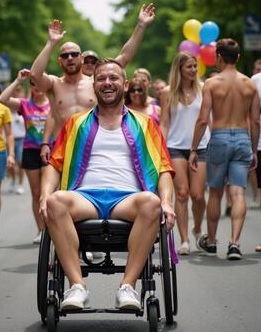
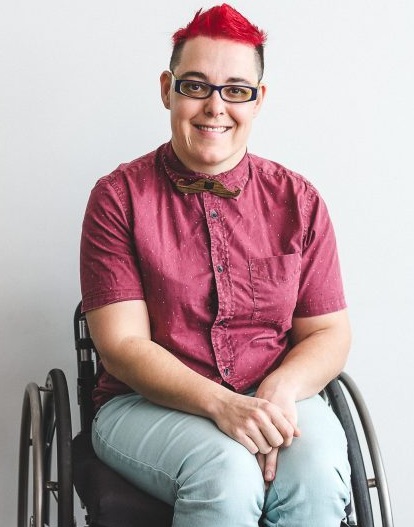
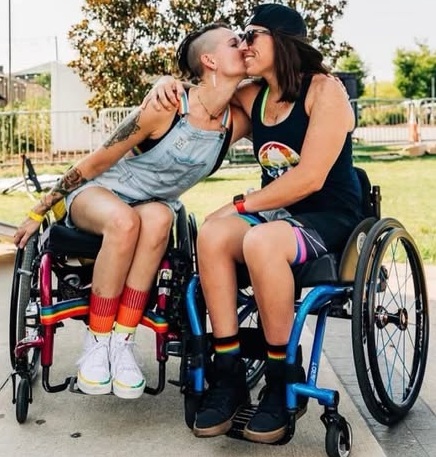
Author Lucy Webster: Similarities Between Experiences of
Being Queer and Being Disabled
Disabled LGBTQ Creatives:
Imagining a Better Tomorrow
Born Without Limbs - Now I'm Marrying My Dream Man
Deaf YouTuber and Her Wife Go Viral Sharing Their
Remarkable Family Journey
Nancy Eves: Autistic, Trans, Non-Binary
LGBTQ People Living With Disabilities
Groundbreaking Queer Autistic Characters paving the Way
for Visibility
Netfilx Series: Queer and Disabled
Defect, Defective - Use “person with a congenital
disability,” “person living with congenital disability.”
When describing a disability, avoid “defect” or
“defective” as they imply the person is sub-par or
incomplete.
Mad,
Psycho, Insane, Deranged, Retarded - Use “people with
mental illness.”
Cripple, Crip - Avoid unless someone wants to be
described as such. Although some disability activists
have reclaimed the terms, there are many others who
consider them offensive, so allies and non-disabled
people should not use them out of respect.
Deaf - Use “deaf and hard of hearing community” when
referring to the community of people with all kinds of
hearing loss. Use capitalized “Deaf” when referring to
Deaf culture and the community of Deaf people. Use
“partial hearing loss” or “partially deaf” for those who
have some hearing loss. Avoid “deaf and dumb” and
“deaf-mute” since people with speech and hearing
disabilities can express themselves “in writing, through
sign language, and in other ways.” The term “hearing
impaired” is also not recommended.
Differently-abled, Special, Gifted - Use “person with
disability” or “disabled person” instead. Terms like
“differently-abled,” although well-meaning, can be
received as “condescending, offensive or simply a way of
avoiding talking about disability."
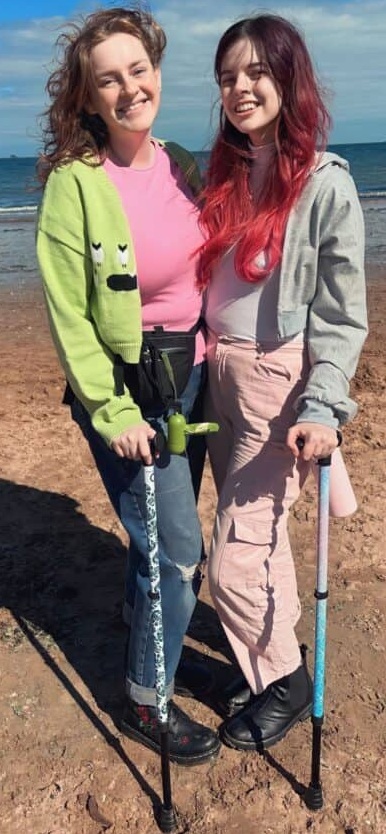
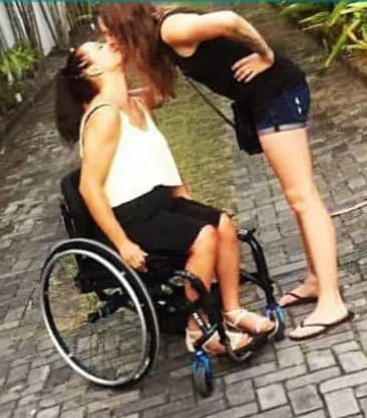
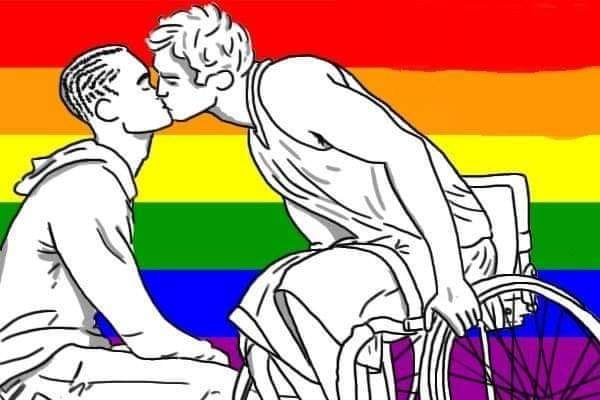
LGBTQ and Disabled Communities: Social Struggles We
Share
Disabled LGBTQ Characters From TV Shows We Love
Autistic LGBTQ Public Figures Providing Essential
Representation
Hailey Danz Wins Triathlon at Her Third Paralympics,
Giving Team LGBTQ its Fifth Gold in Paris
Disabled World Report: Over One Third of LGBTQ Adults
Identify as Disabled
Italian Sprinter Valentina Petrillo: First Out
Transgender Paralympian
T11 Incomplete: Queer Disabled Love Story
LGBTQ People with Developmental Disabilities
Vertically
challenged, Midget - Use “dwarf,” “someone with
dwarfism," "short stature” or “little person.”
Handicap,
Handicapped - When describing a person, use “person with
a disability” or “disabled person” instead. Regulations
or places like “handicapped parking” are generally
acceptable. However, it’s more preferred to use the
terms like “accessible parking.”
Special needs - “Functional needs” is preferred. The
term “special” in connection to people with disabilities
runs the risk of euphemistically stigmatizing disabled
people’s differences. The notion is that despite
differences in everyone’s needs, referring to the needs
of only disabled people as “special” carries an
infantilizing connotation.
Suffers
from/victim of/stricken with - Use of neutral language
like “they are living with muscular dystrophy” is
preferred to “they suffer from muscular dystrophy.” A
general rule of thumb is to avoid terms that “connote
pity." Similarly, a person who has HIV/AIDS should be
described as "living with AIDS" not "suffering from
AIDS" or "infected with AIDS."
Wheelchair-bound - Use “wheelchair user” or “person who
uses a wheelchair.”
Mental Retardation - Use “person with an intellectual
disability.”
[Sources: National Center on Disability and Journalism (NCDJ),
Americans with Disabilities Act (ADA), AP (Associated
Press) Stylebook]
Blind and Gay Man Discovers He's Not Alone
Jax Jacki Brown: Queer, Disabled, Unapologetic And Proud
Video Roundtable: Disability, Sex, Relationships, Dating
Dandy Dodlez: Artist,
Queer, Disabled, Sexually Active
One-Third of LGBTQ Adults
Identify as Having a Disability
Black, Gay, Autistic and
Beautiful
Living With a Disability
in the Gay Community
Disabled Queer Man Hires Sex Workers
Disabled Queers Facebook Page
Groundbreaking Queer Autistic Characters paving the Way
for Visibility
Respect Ability: One-Third of LGBTQ Adults Have a
Disability
Disabled LGBTQ Activists Redefining Sex and Sexuality
Black, Gay, Autistic and
Beautiful
Video Talk: Disabled LGBTQ Couple
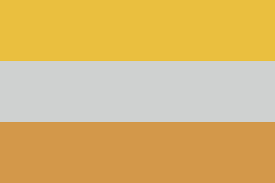
Disability Pride
Flag (2017)
The Disability flag (Disability Pride
flag, Overcoming flag,Flag of the Rights of Persons with
Disabilities) is a flag that represents people who have
disabilities. It was created by the Valencian dancer
Eros Recio in 2017 and then presented to the United
Nations. The flag is meant for general use, particularly
at disability-centered events. It has been used at the
International Day of Persons with Disabilities.
The flag is intended to represent people with
disabilities, their struggle for rights, and related
concepts including the disability pride movement and the
Paralympic Games.
The flag is a tricolor flag with three equally-sized
horizontal stripes of gold, silver, and bronze. These
colors are meant to evoke the three medals at the
Paralympic Games, and are intended to represent the
collective's overcoming of obstacles, rather than the
competitive sentiments related to the event itself.
According
to Recio, the three colors also represent the different
forms of disability. More specifically, according to
Eros Recio, the flag is designed with the colors of
three metals: gold, silver, and bronze. These are meant
to represent the three main types of disability:
physical, mental (intellectual, psychosocial), and
sensory.
Disability Flag: Explanation
Black, Gay, Autistic and
Beautiful
Autistic LGBTQ Public Figures Providing Essential
Representation
Groundbreaking Queer Autistic Characters paving the Way
for Visibility
PBS Video: Differently Abled and Bisexual
Jessica Kellgren-Fozard: Dating a Disabled Lesbian
Queer and Disabled: Representation and Accessibility
Addressing Needs of LGBTQ People with Disabilities
Deaf YouTuber and Her Wife Go Viral Sharing Their
Remarkable Family Journey
Blind and Gay Man Discovers He's Not Alone
Born Without Limbs - Now I'm Marrying My Dream Man
Video: Push Girls
Films and Shows With Messy, Amazing, Real
LGBTQ Disabled Characters
LGBTQ People with Developmental Disabilities
Huff Post: Queer Disability Anthology

Disability Pride
Flag (2021)
The Disability Pride Flag,
created by Ann Magill,
features parallel stripes that stand for intracommunal
solidarity. The colors on the flag symbolize various
disability experiences. The black background mourns
disabled people under abelist oppression who have died
due to negligence, suicide, rebellion, illness, and
eugenics. The stripe’s color represents disability
types:
Red: physical disabilities
Gold: cognitive and intellectual disabilities
White: nonvisible and undiagnosed disabilities
Blue: psychiatric disabilities
Green: sensory disabilities
Disability Flag: Explanation
LGBTQ People Living With Disabilities
Dino Petrera: Gay and Hearing Impaired
Film: Concerto for Abigail
Signing LGBTQ
Meet the Triathlete Who Just Happens to be Transgender
and Deaf
Matthew and Paul
MAP Report: LGBTQ People With Disabilities
Dickie Hearts: Paving the Way for a Rainbow of Deaf
Stories
Disabled LGBTQ Creatives:
Imagining a Better Tomorrow
Gay and Disabled: Nothing Can Stop Me
Dandy Dodlez: Artist,
Queer, Disabled, Sexually Active
Rainbow Alliance for
the Deaf
Sign: Silent Film Project
Try Smiling
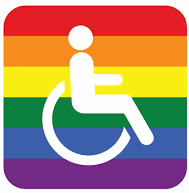
Organizations
Respect
Ability
Respect Ability is a diverse, disability-led nonprofit
that works to create systemic change in how society
views and values people with disabilities, and that
advances policies and practices that empower people with
disabilities to have a better future. Our mission is to
fight stigmas and advance opportunities so people with
disabilities can fully participate in all aspects of
community.
Disabled, Queer and Here
In
2018, Wayne Allingham launched Disabled, Queer and Here,
a performance show featuring talented LGBTQ disabled
people. The events showcase a range of performance art,
including drag, poetry, dance and song. The group aims
to break down barriers and increase awareness,
inclusion, diversity and accessibility for LGBTQ
disabled people.
Brownton Abbey
Created by queer black and brown disabled people,
Brownton Abbey is a political performance party that
creates spaces which centre, celebrate and elevate the
disabled QTIBPOC community. Through these spaces the
collective paves the way towards intersectional and
accessible arts, community and activism.
ParaPride
ParaPride is committed to helping disabled people fully
engage with the LGBTQ community and all its activities.
The charity works with venues, public spaces and online
platforms to create inclusive events that cater to the
needs of all those living with disabilities, mental
health and chronic health conditions, and impairments.
They hosted the first London ParaPride in 2019.
Blind LGBTQ Pride
International
The
purpose of Blind LGBTQ Pride is to provide for the
betterment of the lives of those who are visually
impaired and who are LGBTQ. By providing a forum for the
views and concerns of visually impaired persons
interested in issues facing those who are LGBTQ.
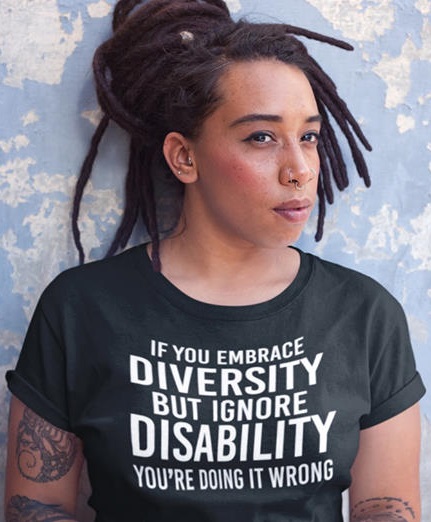
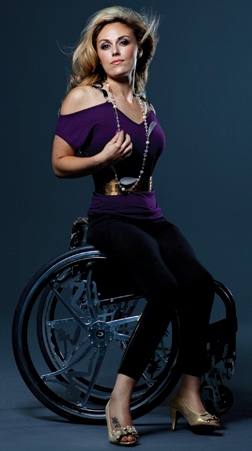
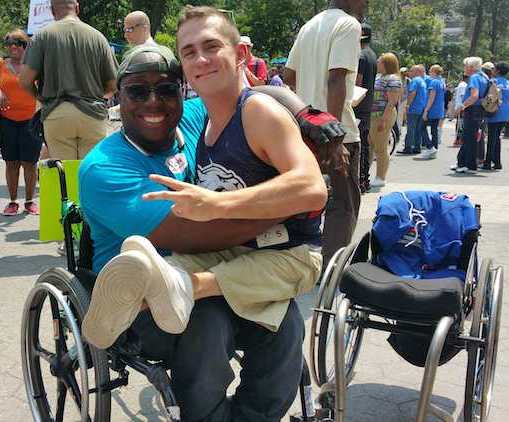
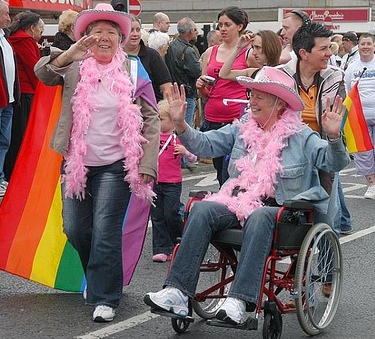
LGBTQ and Disabled Communities: Social Struggles We
Share
LGBTQ Disability Activists Who are Changing the World
One Fight at a Time
Disabled LGBTQ Characters From TV Shows We Love
Alex Mitchell on
BGT: Gay and Autistic
Italian Sprinter Valentina Petrillo: First Out
Transgender Paralympian
Gay with Cerebral Palsy: Too Gay for Disabled
People, Too Disabled for the Gays
Influential Disabled LGBTQ Activists
Films and Shows With Messy, Amazing, Real
LGBTQ Disabled Characters
Jessica and Claudia: Wife as Caregiver
Stephanie
Wheeler: LGBTQ Disabled Athlete
Ballin
Out: New DocuSeries About Wheelchair Basketball
It’s an iconic USA Paralympics image. Stephanie Wheeler,
after winning her second straight women’s wheelchair
basketball Paralympics gold medal as a player, grabbed
an American flag and hoisted is above her shoulders.
Wheeler has since elevated herself to legendary status.
She coached Team USA to gold at the Rio Paralympics in
2016. Over the years she has also coached the Illinois
women’s wheelchair basketball team. She is also a member
of the National Wheelchair Basketball Hall of Fame.
Wheeler is also featured in Outsports’ docuseries,
“Ballin’ Out,” which can be viewed on YouTube. In the
series, she invites the audience into not just her
coaching world, but also her personal life as an out
lesbian.

Q: “Ballin’ Out.” What are your thoughts on the "Ballin
Out" series?
STEPHANIE: I love it. I think the storytelling is really
beautiful. Such care was taken with all of our stories.
Everyone who had the opportunity to tell their story.
Such care was taken with how those stories were
portrayed, in letting us take the lead in how we wanted
to be seen and heard. I love the documentary series. You
get this mix of beautiful storytelling, and this super
ultra competitive look at our sport. People have told me
you’ll laugh, you’ll cry. It's unique. These stories
haven’t been told. And it’s very timely.
Q: When we embarked on this project over two years ago,
you talked about making sure this project didn’t become
“Inspiration Porn.” Tell us about that, and also, did we
succeed?
S: One of
the things that’s easy to slide into when we’re telling
stories about folks who are disabled is that disabled
people are objectified to make other people feel better.
It exploits disabled folks in that process.
Why this project is not that is that: We get to tell our
stories. it’s our words and our experiences. By letting
that happen, we avoid getting into the water of
“inspiration porn.” The series is inspirational. It will
inspire people to try for the national team, or that
they can be a woman and disabled and queer. But we got
to have a say in how that story is told.
The docuseries is obviously aimed at a mass audience,
but it’s not there to make you feel pity or sad. It’s
not there to objectify us. It tells our stories, and it
tells our whole stories. The other reason it avoids
that, is that it shows us in all of our complexities.
This series shows our emotions, it shows our different
experiences, it shows we’re complex, complicated
individuals living with disabilities.


Groundbreaking New Series Showcases LGBTQ Athletes and
Coaches on USA Women’s Wheelchair Basketball Team
Stephanie Wheeler is Part of the Heart and Soul of USA
Women’s Wheelchair Basketball
Q: How do you see Team USA’s chances in Women’s
Wheelchair Basketball at the Paris Paralympics?
S: This
team competing at the Paralympics has every opportunity
to win a gold medal. Thinking about teams that are
successful, they have speed, they have the ability to
score in different ways, they can defend, they have
veteran leadership and young players who might be on the
verge of changing the game, and they have great
coaching. This team has everything it needs to go win a
gold medal.
They’ve also experienced a lot over the last three
years. In the docuseries you’ll see their journey at the
2023 World Championships. This team has grown so much
and they are ready, they are ready for this moment.
We have a long history of greatness with USA Wheelchair
Basketball. From our first teams to this team right now.
we have gold medals, and we have great people. We’ve won
four gold medals at the Paralympics. That’s a legacy we
can be proud to be part of, and I hope this team knows
all of the teams before them have their back, to lift
them up.
Ballin Out - Episode 1 Out LGBTQ Athletes for USA
Wheelchair Basketball
Ballin Out - Episode 2 Disabilities
Ballin Out - Episode 3 being LGBTQ in Wheelchair
Basketball
Ballin Out - Episode 4 Mental Health
Ballin Out - Episode 5 Pride
Q: You’ve accomplished everything someone could in the
sport. What is your present, and what is your future, in
women’s wheelchair basketball?
S: As the head coach at the University of Illinois, I
get to work with some of the athletes who have
aspirations to compete on Team USA. And I get to work
with other athletes whose highest aspiration is the
collegiate level. I get to help them all achieve their
hopes and dreams. And I never take that for granted.
Outside of coaching, my goal is to make sure all of the
women in our sport feel they belong for what they bring
to the sport, and for who they are. That includes some
amazing coaches. I’ll continue to do everything I can to
ensure our sport is a place where everyone feels they
belong.
Q: If you could point viewers to a couple key takeaways
from the Ballin Out series, what would they be?
S: Disabled people are complicated and complex, just
like every other human being. We have lives where we
experience ranges of emotions. We have joy. We’ve all
gone through things that have changed the trajectory of
our lives. We experience love. We experience the full
range of emotions of humanity. And I hope people see
that. Joy. Love. Heartbreak. Tragedy.
I also want everyone to see how amazing our sport is.
And how unbelievably athletic and talented our athletes
and coaches are. And to see them as competitors, and the
amazing Paralympians they are. I hope they can now see
that disability isn’t limiting, it’s ableism in society
that’s limiting. And I hope it helps shift that lens and
inspire people to see where ableism exists in society
and help everyone be whatever they want to be.
[Source: Cyd Zeigler, Out Sports, August 2024]

Netfilx Series: Queer and Disabled
Films and Shows With Messy, Amazing, Real
LGBTQ Disabled Characters
Disabled LGBTQ Activists Redefining Sex and Sexuality
Author Lucy Webster: Similarities Between the
Experiences of Being Queer and Being Disabled
Sign: Silent Film Project
Gay and Disabled: Nothing Can Stop Me
Try Smiling
The Journey of
Being LGBTQ and Disabled
Challenges, Struggles, Triumphs
In today's diverse and ever-evolving world, the
experiences of individuals within marginalized
communities have started to gain the attention and
recognition they deserve. One such intersection is being
a part of the LGBTQ community while also living with a
disability. This unique journey encompasses a range of
challenges and triumphs, reflecting the profound
resilience of those who navigate both identities. This
essay explores the complexities and experiences of
individuals who identify as LGBTQ and disabled,
highlighting the need for increased understanding,
acceptance, and inclusivity.
Intersectionality is the understanding that an
individual's identity is shaped by multiple factors such
as race, gender, sexual orientation, and disability,
which intersect and interact to create unique
experiences and challenges. Being LGBTQ and disabled is
an example of such intersectionality, where individuals
face the compounded effects of societal discrimination,
stereotypes, and stigma. Acknowledging this
intersectionality is crucial to appreciate the full
spectrum of their experiences.
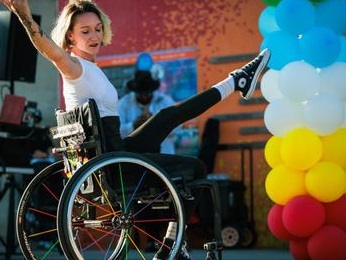
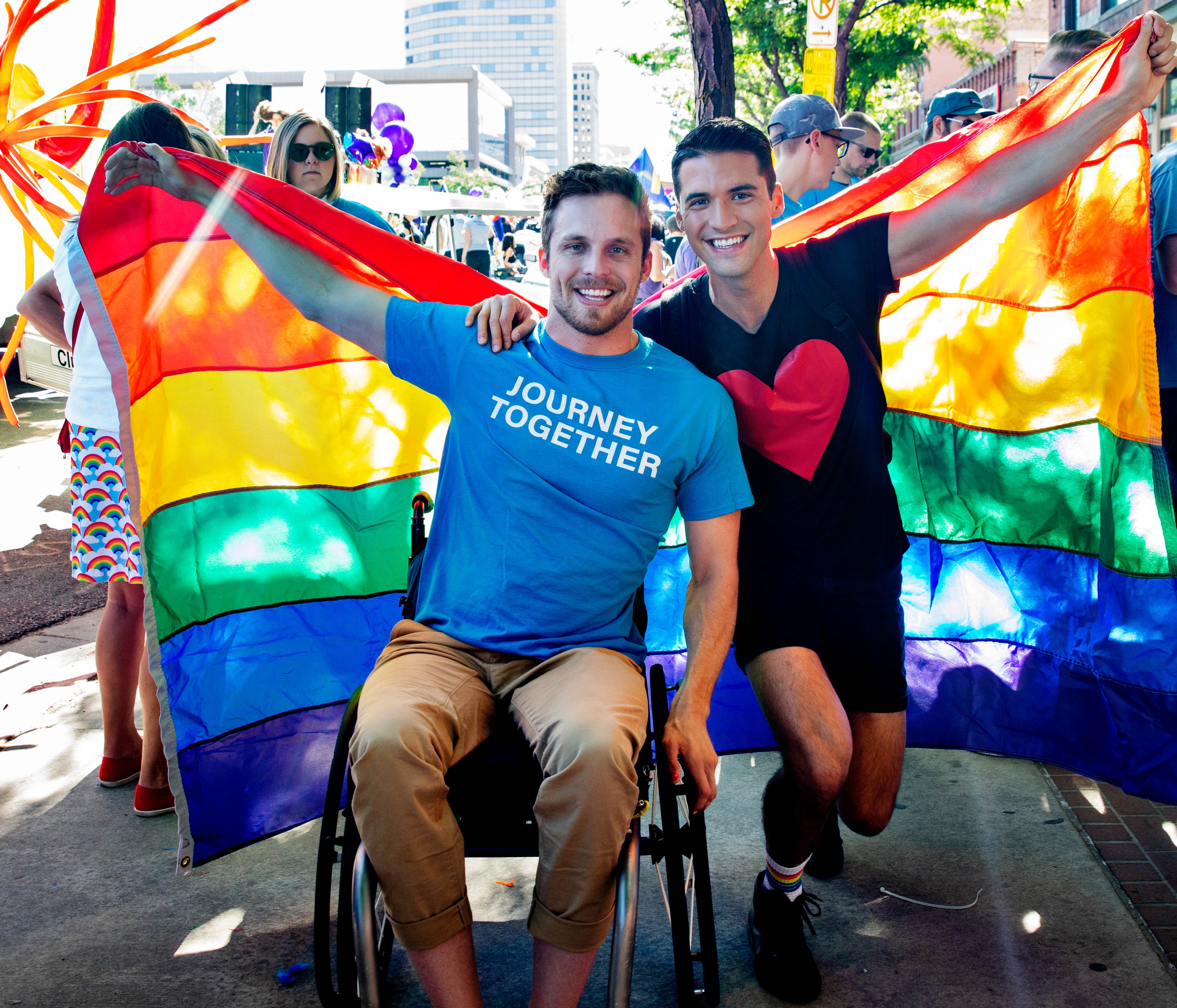
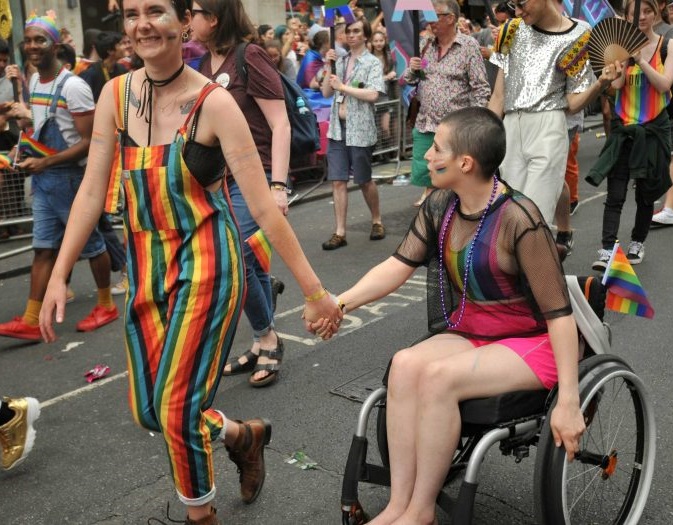
Gay Autistic
Comedian
Dark Disabled Stories:
Hard Truths About Queer People With Disabilities
Inter-Abled Relationships: Benefits of Dating a Disabled
Person
Addressing Needs of LGBTQ People with Disabilities
Interview With Kay Ulanday
Barrett
Meet the Triathlete Who Just Happens to be Transgender
and Deaf
Mobility Aids: Time to Sit Down
Alex Mitchell on
BGT: Gay and Autistic
The experience of being LGBTQ and disabled is shaped by
a myriad of challenges. Within the LGBTQ community,
disabled individuals may face prejudice and ignorance,
as their struggles may be overshadowed or disregarded.
Similarly, in the disabled community, their sexual
orientation or gender identity might be misunderstood or
dismissed, leading to feelings of isolation and
invisibility. This dual stigma can result in social
exclusion, limited access to resources, and heightened
vulnerability to discrimination.
Accessibility is a critical concern for individuals
living with disabilities, and this is no different for
LGBTQ individuals with disabilities. Physical barriers
and lack of accommodations in public spaces, healthcare
facilities, and workplaces can pose significant hurdles.
Additionally, LGBTQ spaces might not always be inclusive
of people with disabilities, lacking appropriate
accommodations or awareness of their unique needs.
Promoting accessible and inclusive environments for all
is vital to fostering a sense of belonging and equal
participation.
Living at the intersection of being LGBTQ and disabled
can have a profound impact on mental health. The weight
of societal expectations and discrimination can lead to
increased rates of anxiety, depression, and feelings of
worthlessness. However, it is essential to recognize the
immense resilience that arises from navigating these
challenges. Many individuals find strength in their
identities, forming a supportive network of like-minded
individuals who understand their struggles and triumphs.
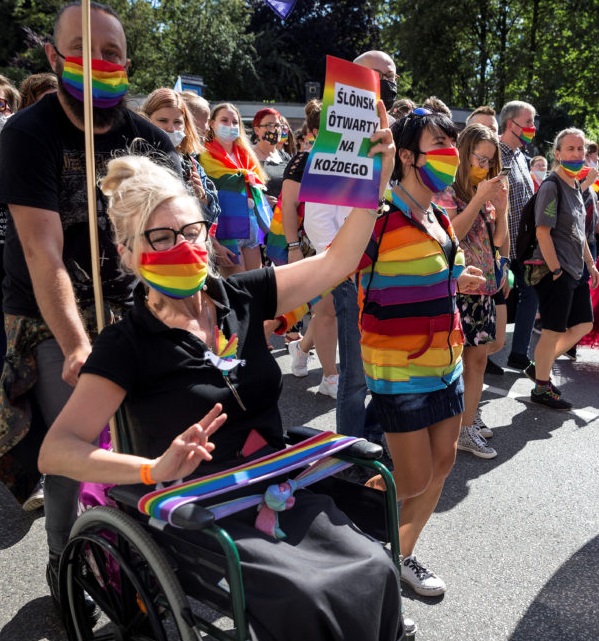
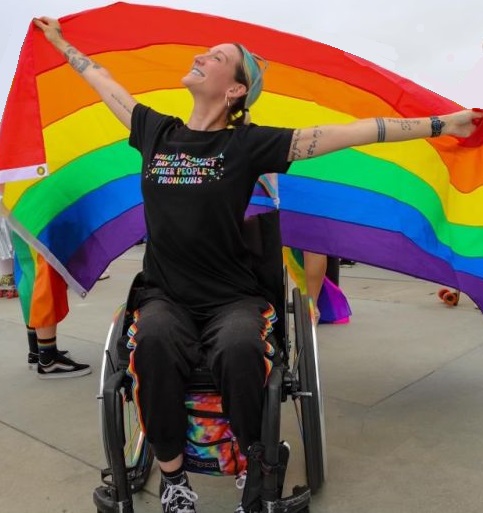
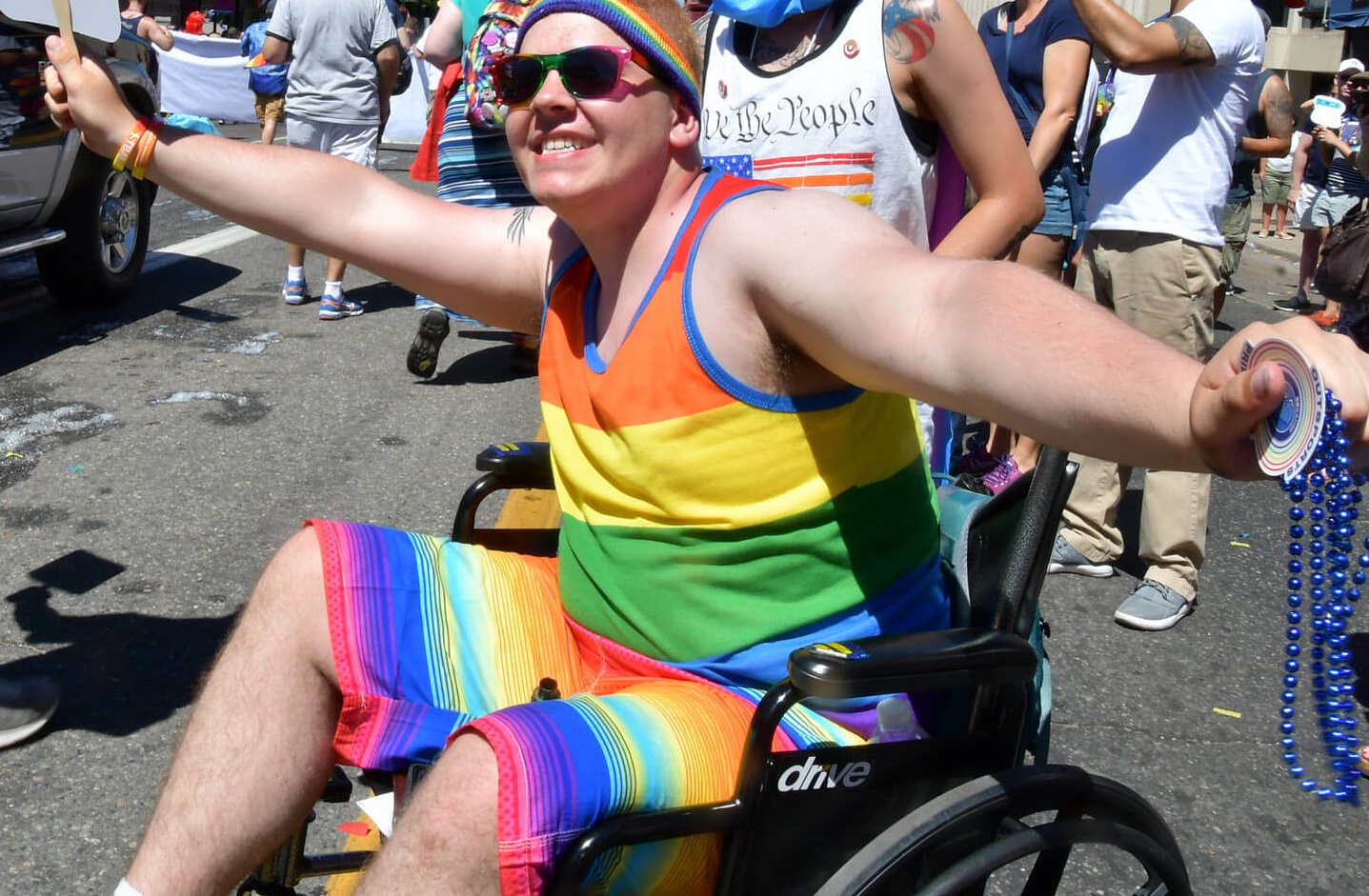
LGBTQ Disability Activists Who are Changing the World
One Fight at a Time
Disabled Queer Man Hires Sex Workers
No, the Wheelchair Is Not a Prop: Sarah Palegic, Not
Your Ordinary Drag Queen
Blind and Gay Man Discovers He's Not Alone
LGBTQ People Living With Disabilities
Addressing Needs of LGBTQ People with Disabilities
Disabled Queers Facebook Page
Influential Disabled LGBTQ Activists
Groundbreaking Queer Autistic Characters paving the Way
for Visibility
Film: Concerto for Abigail
The journey of being LGBTQ and disabled has given rise
to a powerful wave of advocacy and empowerment. Many
individuals actively engage in raising awareness about
the intersectionality of their identities, breaking
stereotypes, and fighting for equal rights and
representation. Through their resilience and
determination, they inspire change and pave the way for
a more inclusive and compassionate society.
The experience of being LGBTQ and disabled is an
intricate interplay of challenges, triumphs, and
resilience. Navigating these dual identities requires
acknowledgment, understanding, and empathy from society
at large. By promoting accessibility, inclusivity, and
acceptance, we can create a world where individuals of
all identities can thrive, breaking free from the
shackles of discrimination and embracing the beauty of
human diversity. Embracing intersectionality enriches
the fabric of humanity and fosters a society that
celebrates every individual for who they are.
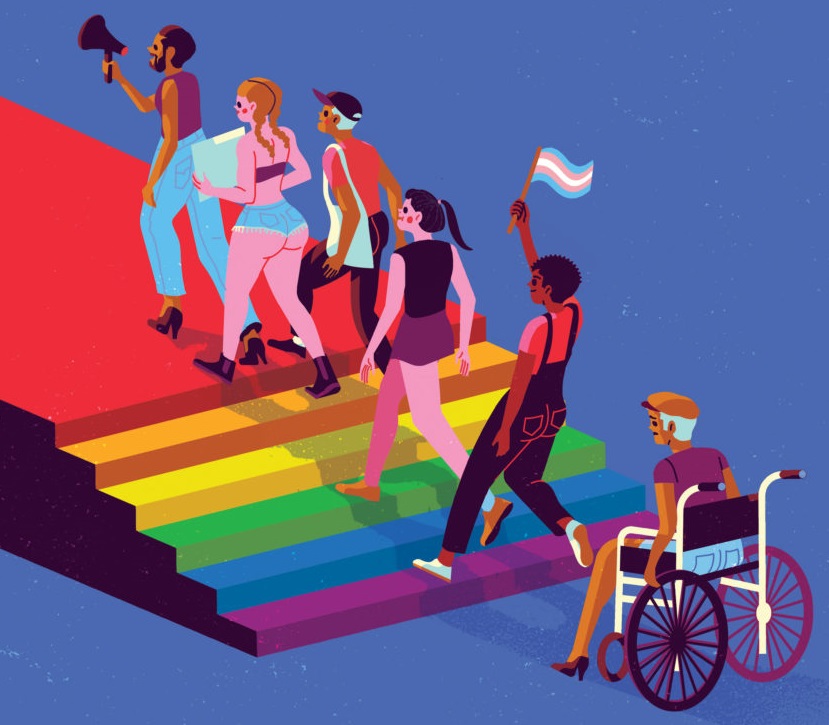
Autistic LGBTQ Public Figures Providing Essential
Representation
Alex Mitchell on
BGT: Gay and Autistic
Special: Gay Disabled
Comedy TV Series
Queer and Disabled: Misconceptions
Deaf YouTuber and Her Wife Go Viral Sharing Their
Remarkable Family Journey
Tiphany Adams: True Love Within Yourself
Rainbow Alliance for
the Deaf
Video: Push Girls
PBS Video: Differently Abled and Bisexual
Try Smiling
Queer
Disabled Love Story
“T11
Incomplete” is a medical term, which refers to a
paraplegic patient whose spine is severed but who still
has some feeling in their legs. It is also the title of
a groundbreaking new film in which two broken people,
Kate Murphy (Karen Sillas) and Laura (Kristen Renton),
find love through a caregiver-patient relationship.
T11 Incomplete is groundbreaking for several reasons.
One is its director and writer, Suzanne Guacci, a former
state trooper who lost her leg and went on to begin a
production company, Aspire Productions, dedicated to
telling stories at the intersection of disabled and
LGBTQ identities.
Second is how the film, which was recently released,
fulfills this promise, centering historically
marginalized people while also employing them on set and
behind the camera. Such is Guacci's commitment to
uplifting these communities that a cat named Peanut
Butter is blind in real life.
Third, T11 Incomplete is a universal film about damaged
people who have wronged others but are fighting for a
brighter future for themselves and their loved ones. In
addition to disability, the film also addresses
substance abuse, recovery, and the work that goes into
maintaining and repairing family relationships, a topic
that any viewer can relate to.
Guacci discusses these themes, the lessons Hollywood can
learn from the film and its creation, and her own
survivor story.
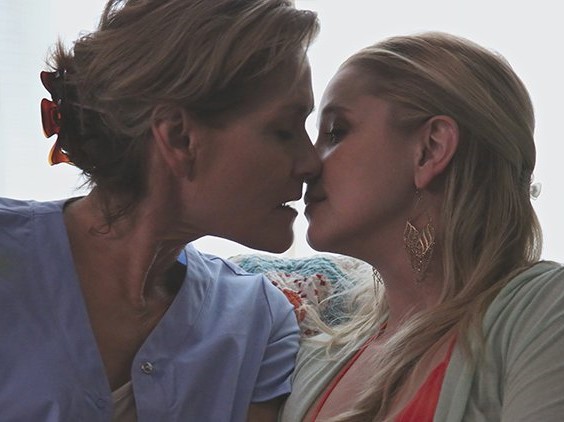
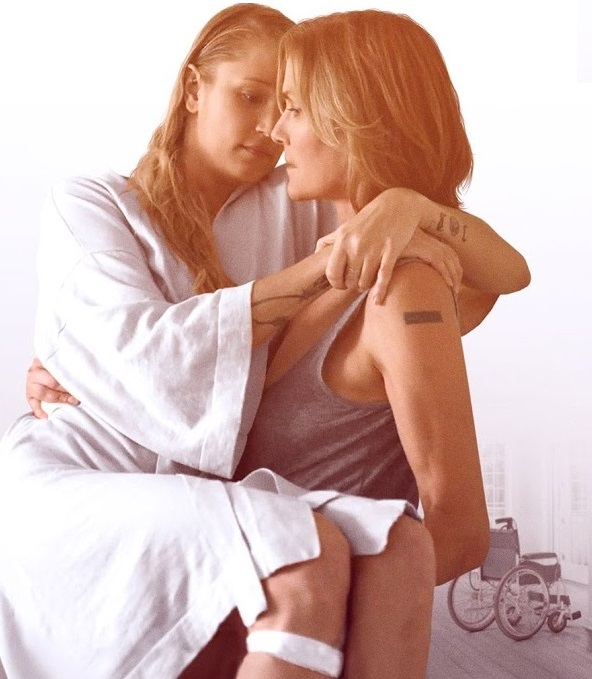
Movie Trailer: T11 Incomplete
T11 Incomplete: Queer Disabled Love Story
Films and TV Shows About Disabilities
That Put Disabled People First
Films and Shows With Messy, Amazing, Ridiculous, and
Real LGBTQ Disabled Characters
Disabled LGBTQ Characters From TV Shows We Love
Tell us
what inspired you to write and direct T11 Incomplete.
It started
with me wanting to write a story about nursing. I think
they are extraordinary human beings. We’ve all seen it
now through COVID, but nurses played a major part in my
own recovery, and over the past 10 years I’ve had a host
of aides and hospice nurses and RN’s and LPN’s in and
out of my house for my aging parents and my in-laws, so
they have been very prevalent in my life. And
simultaneously to that, I wanted to write a story with a
lesbian female disabled character. T11 Incomplete is
what came out of all that.
There are
still so few representations of LGBTQ disabled
characters. What did it mean to you personally to bring
this visibility to film?
It was
very important to me to bring this story and the
character of Laura to light because I’ve never seen a
character like her or an LGBTQ story like this. It’s
different and it’s timely, and being disabled myself, I
felt a responsibility to get it right.
Kate and Laura are not only abled and disabled; there is
also an age gap in their relationship. As the filmmaker,
what was it like exploring a romance between characters
who are bridging different divides?
It was
interesting for me as a writer to explore this
relationship because on one hand, it is complex with all
those different divides, but in its true essence, after
you peel away those differences of age and ability and
socio-economic, it is really quite simple. It’s just two
souls who cling to each other in their mutual suffering.
Suffering knows no divide. That is indeed the bridge.
And then as a filmmaker, watching Karen Sillas and
Kristen Renton embody these characters, was just so
beautiful.
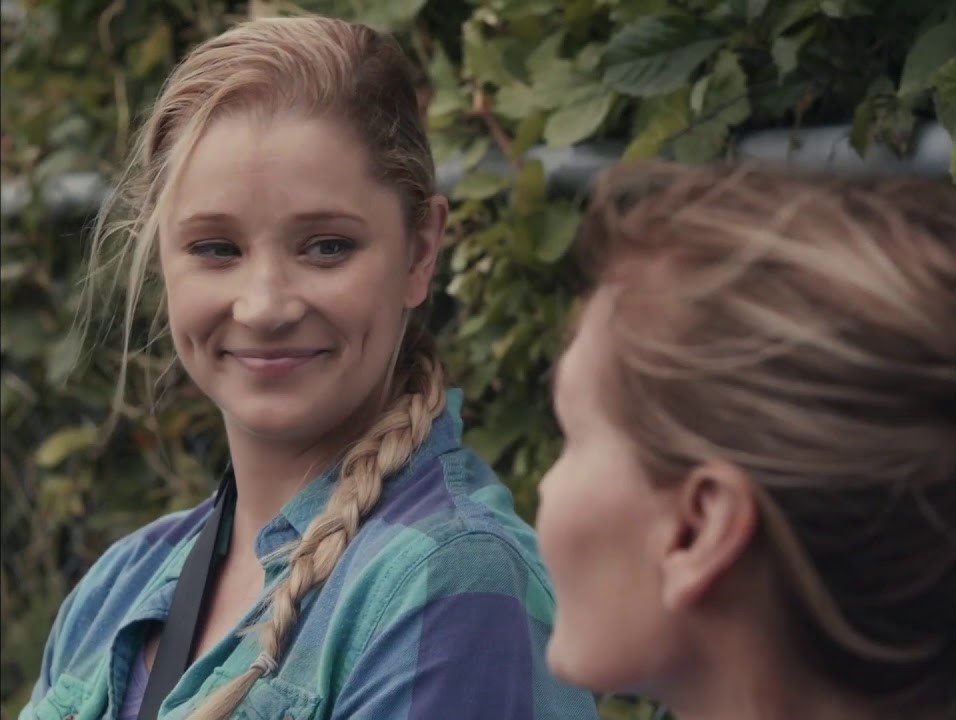
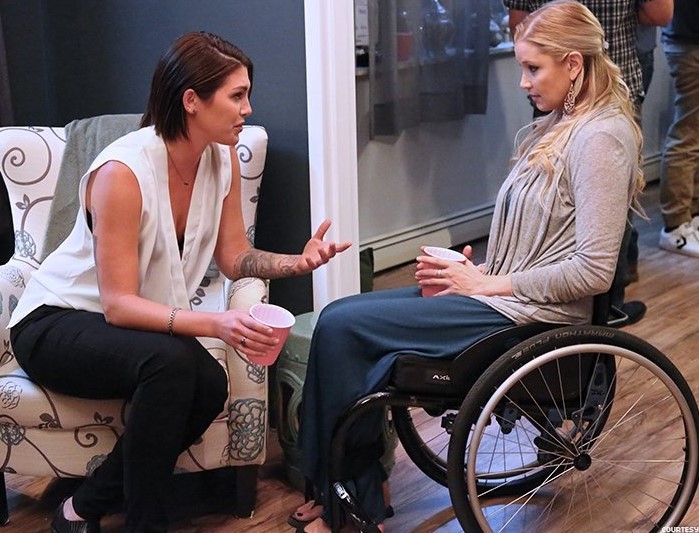
Long Beach Disability Pride Returns for
Second Year
Dark Disabled Stories:
Hard Truths About Queer People With Disabilities
Meet the Same-Sex Parents Advocating for
LGBTQ and Disability Rights
Respectability: LGBTQ People With
Disabilities
Queer and Trans Creators with Disabilities Fighting for
an Accessible World
Addressing Needs of LGBTQ People with Disabilities
Hell No: Ingrid Michaelson ASL Music Video
Disabled Queers Facebook Page
Blind and Gay Man Discovers He's Not Alone
Groundbreaking Queer Autistic Characters paving the Way
for Visibility
What were
some of the challenges of creating a protagonist like
Kate who is at once sympathetic and flawed?
It is
tricky because as a writer you don’t want to tip the
scale either way. You need to find the balance. But I
always strive for the truth, and I think if the
character is grounded in truth, it works. You can’t fake
a character like Kate. It won’t work if you do. And
that’s why as a director, putting Kate into the hands of
magnificent Karen Sillas, who hit all the right notes,
was just incredible to watch every day on set.
The film
deals with good and bad (and the gray area that falls in
between) from the point of view of criminal justice as
well as individual judgment. How did your career as a
New York state trooper influence how you judge others
and how you wanted to present judgment and forgiveness
in the film?
As a
former trooper I was very aware that I held people’s
lives in my hands. Whether I was arresting someone for
DWI or giving someone a speeding ticket. The power I
held, I took very seriously, and how you handle a
situation when you hold the power means everything. But
I tried always to see people and not the act they were
committing. And I learned that nothing is completely
black and white. No two speeding tickets are the same,
no two DWIs are the same. There is so much gray, and it
requires discernment when you deal with people. It
requires listening and understanding. And I think in T11
Incomplete I wanted to really emphasize all of that. The
characters are neither completely good or bad. They have
moments of each, and they are all learning and growing
at different paces and stages. But to judge them on one
act is unfair. We are all more than our mistakes or our
poor decisions.
How did
losing a leg in the line of duty change your point of
view of the world?
I had never known an amputee before I lost my leg.
Actually, my only reference was from movies I had seen
or veterans, who in many cases were in wheelchairs as
opposed to ambulating with prosthetics. So just in that
regard, my world opened because I was thrust into
becoming a member of this group that I knew nothing
about. But I was hit by a young girl when I was on duty.
She had smoked a little and drank a little, and I was in
her path that fateful night, but I have to say I never
felt anger or blame. It always just seemed to me that
this was lined up for me. My destiny, so to speak, and
her destiny would be her own. It wasn’t my job to judge
her. Not that it wasn’t earth-shattering at the time
because it absolutely was, and it took time to grieve
the loss of not only my limb and my physicality but my
career and my abilities. But after a while, I moved past
all of that, and I realized the gift that I was given.
Not only to be alive but to have known excruciating pain
and to have persevered through and healed. To have felt
my world crumble but to rise and start anew. I know
grace and appreciation in such a profound way today that
I am always on the verge of tears. It has truly been an
awakening. I am aware now of the amazing disabled
community that I am very proud to be part of. I am so
proud of actors like Katy Sullivan and Kristen Renton
and Lauren Russell who do their thing and give their
all, no matter what their day brings or how they are
feeling. And my hope is that I can continue to be an
advocate in my work and in my own way.
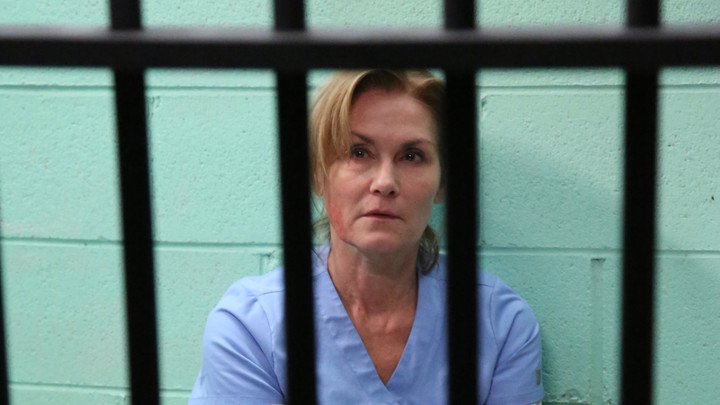
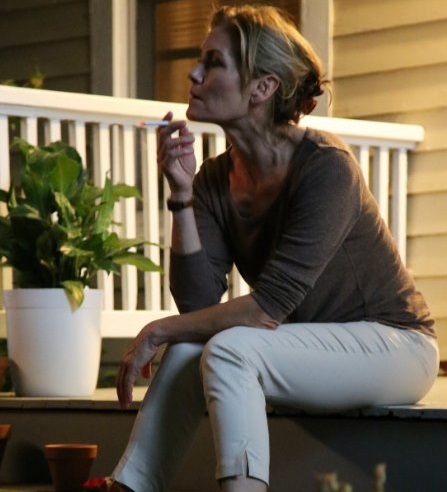
Movie Trailer: T11 Incomplete
T11 Incomplete: Queer Disabled Love Story
Films and TV Shows About Disabilities
That Put Disabled People First
Films and Shows With Messy, Amazing, Ridiculous, and
Real LGBTQ Disabled Characters
Disabled LGBTQ Characters From TV Shows We Love
Many of
the characters are struggling with or recovering from
addiction — a struggle that is, unfortunately,
disproportionately seen in the LGBTQ community. What
message did you hope to send about folks who are
struggling and recovering?
I'm not sure I wanted to send a message, and I certainly
have had my own struggles with abuse before I came out.
But Kate's character surely knows the struggle. Her
sobriety is what changes her life and connects her to
her family again. And although temptation is always
there, she holds steady to the love. Especially of her
grandson Brady. That’s her driving force, that is what
gives her the strength she needs to stay sober. So I
say, cling to the love in your life and let it be your
source of strength.
The film is not only centered on queer and disabled
people — it also employs them as actors and crew
members. What lessons can Hollywood learn from this?
To open your eyes and be creative. Judy Bowman, our
casting director, and I took the task very seriously of
thinking outside the box when casting and putting actors
in spots that allowed them to be seen as actors first
and foremost. We have Zach Booth playing a straight
character, Katy Sullivan playing an able-bodied
character, Kristen Renton playing a wheelchair user. We
flipped the labels while still being inclusive and
representing our communities. For me as a disabled
lesbian director, I felt a great responsibility not only
to serve the story with superb actors but to represent
our communities honestly, and that extended to having
disabled crew members as well. And, believe it or not,
we chose a blind kitten to play Peanut Butter! So this
was the way for me that felt like I was satisfying
everything and gave me peace about it.
What do
you hope is the takeaway for audiences?
I hope that the story resonates with people. It’s a
human story about loss and forgiveness and suffering,
but it’s also about hope. And I think as human beings,
especially after the last year we’ve had, we can all use
a little hope.
[Source: Daniel Reynolds, Advocate Magazine, April 2021]
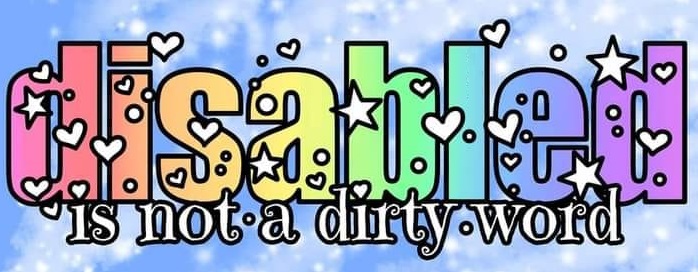
Signing LGBTQ
Matthew and Paul
LGBTQ Disability Activists Who are Changing the World
One Fight at a Time
Alex Mitchell on
BGT: Gay and Autistic
Film: Concerto for Abigail
Autistic LGBTQ Public Figures Providing Essential
Representation
Films and Shows With Messy, Amazing, Real
LGBTQ Disabled Characters
Meet the Triathlete Who Just Happens to be Transgender
and Deaf
Dark Disabled Stories:
Hard Truths About Queer People With Disabilities
Dickie Hearts: Paving the Way for a Rainbow of Deaf
Stories
Queer and Trans Creators with Disabilities Fighting for
an Accessible World
Nancy Eves: Autistic, Trans, Non-Binary
Disabled LGBTQ Activists Redefining Sex and Sexuality
Gay with Cerebral Palsy: Too Gay for Disabled
People, Too Disabled for the Gays
Special: Gay Disabled
Comedy TV Series
Incredible Makeup Artist With No Arms
Rainbow Alliance for
the Deaf
Disabled LGBTQ Creatives:
Imagining a Better Tomorrow
Groundbreaking Queer Autistic Characters paving the Way
for Visibility
Sign: Silent Film Project
Gay Autistic
Comedian
Deaf and Gay
Rainbow Alliance for the Deaf
Hands and
fingers move through the air with amazing speed and
precision. I sit watching, hoping the weak smile on my
face will mask my befuddlement. All I see in these
movements is a blur. Everyone else at the table sees
jokes, anecdotes, and answers to the omnipresent dinner
party question, "What have you been up to lately?"
I am at a birthday dinner for a deaf friend of my
sister, and I am only one of two hearing people in
attendance who doesn't sign. The other looks like she
has suddenly been transported to a marketplace in
downtown New Delhi and she has no idea what to do or how
to act.
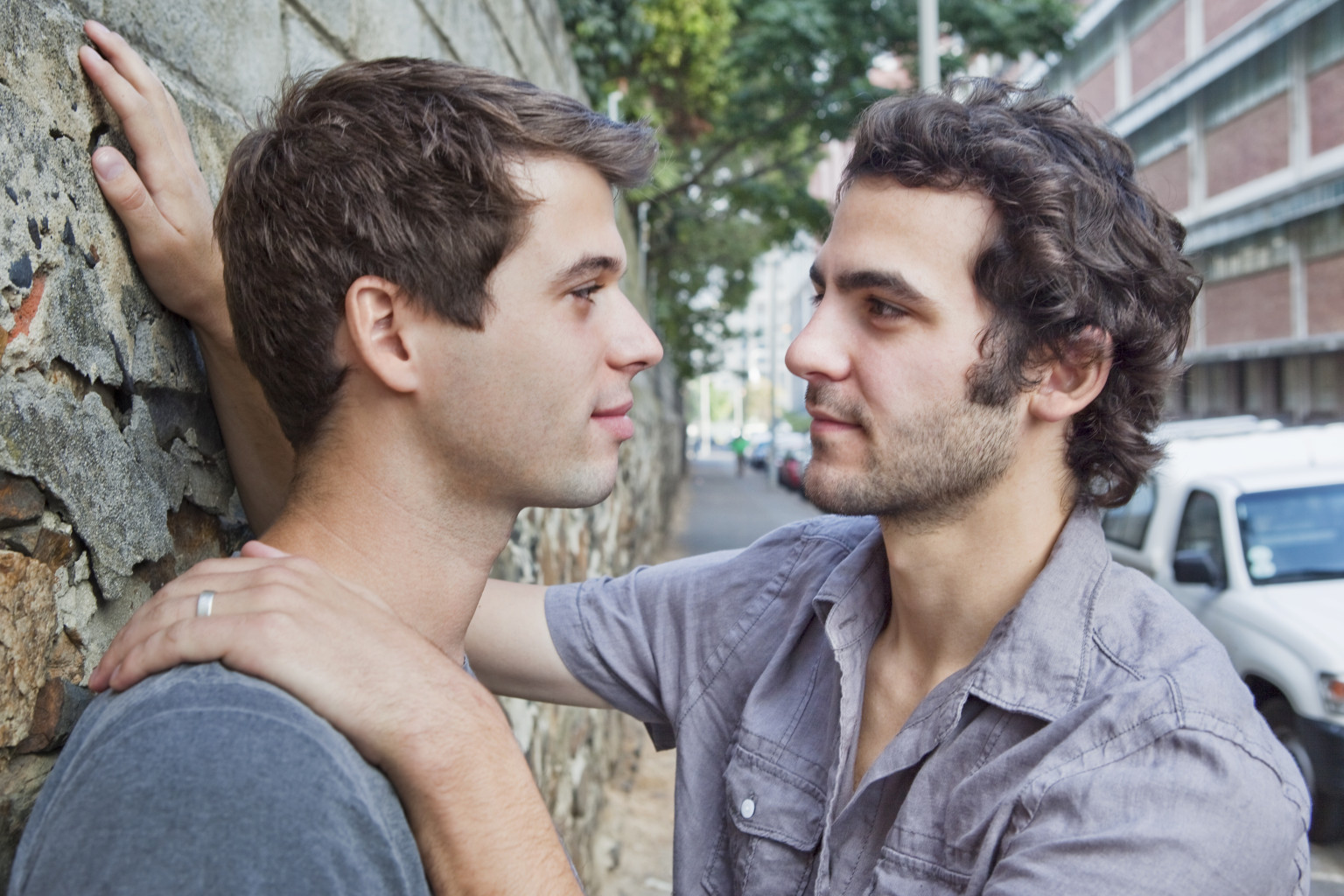
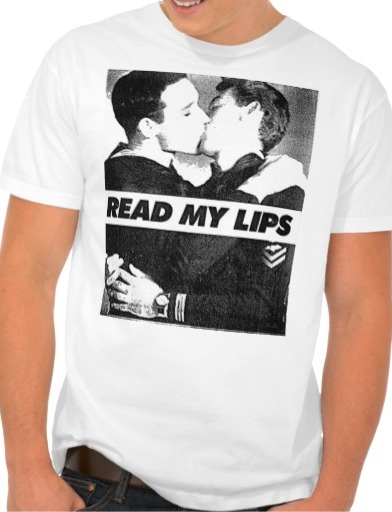

ASL Music Video: This is Me
Waiting to Be Heard: On Being Deaf and Gay
Nyle DiMarco: Role Model for Deaf and LGBTQ Communities
Dino Petrera: Gay and Hearing Impaired
Deaf YouTuber and Her Wife Go Viral Sharing Their
Remarkable Family Journey
Rainbow Alliance for
the Deaf
Signing LGBTQ
I imagine as I am sitting there that this is but a small
taste of the daily experiences of the deaf. Far too
often, they find themselves at the table, so to speak,
but excluded from the conversation. In the decade since
that dinner party, fortunately, there has been advances
in awareness of the challenges facing deaf people, in
large part due to efforts to comply with the Americans
with Disabilities Act in the United States and similar
laws elsewhere. Consequently, deaf individuals aren't
excluded from the conversation quite as often, anymore,
but still too much.
While the rest of the world catches up and works to
include the hearing impaired in the fabric of society,
the deaf have created their own community through
organizations, social gatherings, and internet forums.
In this way, the deaf community is much like the LGBTQ
community, and a substantial body of research that looks
at issues of inclusivity and diversity has included
sections on challenges facing both deaf and LGBTQ
individuals, as they are often the same. However, scant
research has been done on those individuals who are both
LGBTQ and deaf. This is surprising, considering what my
sister, an interpreter for the deaf, has told me: "You'd
be surprised how many deaf people are gay." How
many exactly? According to the Deaf Queer Resource
Center, there are about 2.8 million deaf LGBTQ persons
in the United States alone.
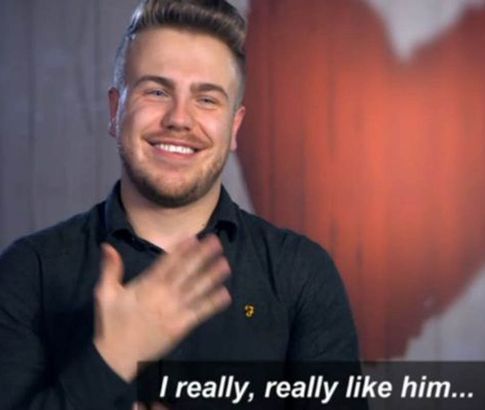
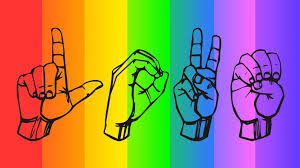
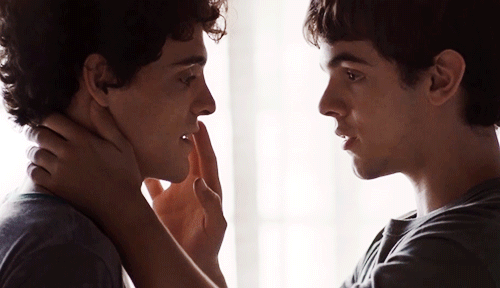
Jessica: International Week of the Deaf
You Need to Calm Down: Sign Language
Sign: Silent Film Project
Deaf Queer Resource
Center
Jessica: Disabled and Gay
Short Film: Signage
Perhaps because of the lack of widespread attention, the
deaf LGBTQ community has developed its own subculture.
Several organizations exist to help facilitate the
spread of information about LGBTQ persons with hearing
impairments and to bring together the community as a
whole. Among those organizations is the previously
mentioned Deaf Queer Resource Center, whose primary
function is the dissemination of information about and
for deaf LGBTQ individuals.
More proactive is the Rainbow Alliance for the Deaf (RAD),
which advocates for the rights of the deaf and LGBTQ, as
well as having a bi-annual conference. Not only does the
conference educate and have workshops, they also name a
man and woman of the year, for those individuals who
have excelled in advocacy and charity work in their
communities. Additionally, they have a pageant with a
Mr. RAD, Ms. RAD, and Miss RAD named.
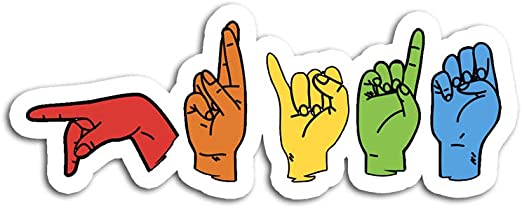
Interpreting Queer Words in ASL
ASL Music Video: The Way I Am
Queer and Deaf: Tackling Oppression Together
Deaf and Gay and Totally Okay
Films and Shows With Messy, Amazing, Real
LGBTQ Disabled Characters
Groundbreaking Queer Autistic Characters paving the Way
for Visibility
Jessica Kellgren-Fozard: Disability Misconceptions
Respectability: LGBTQ People With
Disabilities
Dickie Hearts: Paving the Way for a Rainbow of Deaf
Stories
Meet the Triathlete Who Just Happens to be Transgender
and Deaf
LGBTQ in the Deaf Community
Queer Signing
According to a 1990 study by Daniel B. Swartz,
Perceptions & Attitudes of Male Homosexuals from
Differing Socio-Cultural & Audiological Backgrounds,
deaf gay men very likely to join organizations and gay
rights groups. Further, deaf gay men are happier in
their relationships and have more positive self-images
than hearing gay men. However, Swartz found that the
level of confusion about one's sexuality was the same
for hearing and deaf men who had deaf parents, which
suggests a general lack of knowledge of LGBTQ issues
among straight deaf individuals.
Unfortunately, a couple of separate studies found that
deaf LGBTQ persons are more likely to be victims of
sexual, physical, and psychological abuse or assault.
Gay deaf individuals are also more likely to contract
HIV. Klinger concluded that the more comfortable an
LGBTQ person is with his or her identity and feels a
connection to the community, the more likely he or she
is to have acquired sexual knowledge, although this is
more likely among deaf gay men than deaf lesbians.
Of course, those who are deaf and gay aren't the only
ones facing challenges. Anyone who deals with both
disability and sexual orientation issues must navigate a
different path. While there is a dearth of literature on
being gay and deaf, it's an abundance compared to the
amount of literature available concerning LGBTQ
individuals who are blind. Fortunately, there has been
more research devoted to handicapped individuals who are
LGBTQ. Regardless of how much attention or research has
been devoted to them, those with disabilities who are
gay or lesbian must deal with an extra burden of both
societal judgment and misconceptions.
[Source:
Michael Abernathy, Pop Matters]
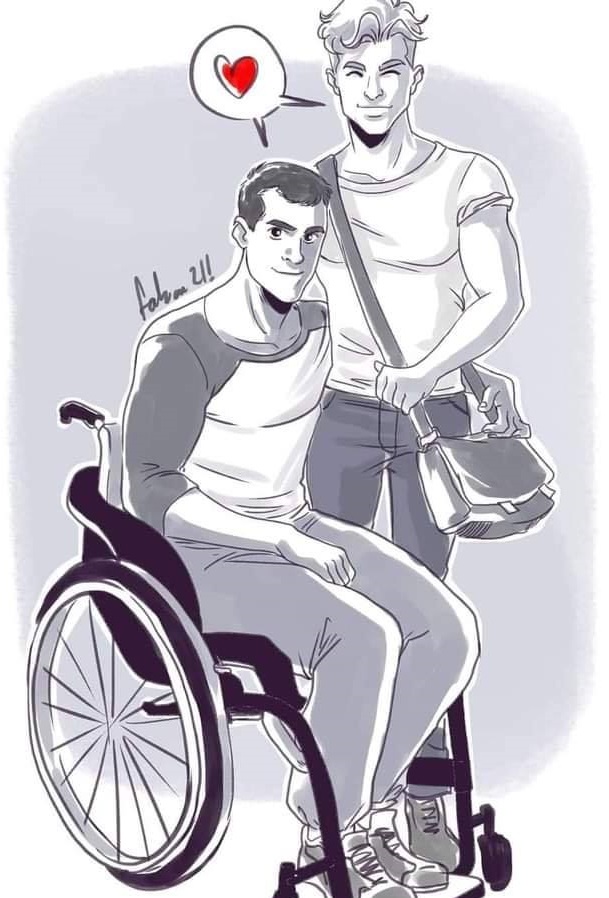 
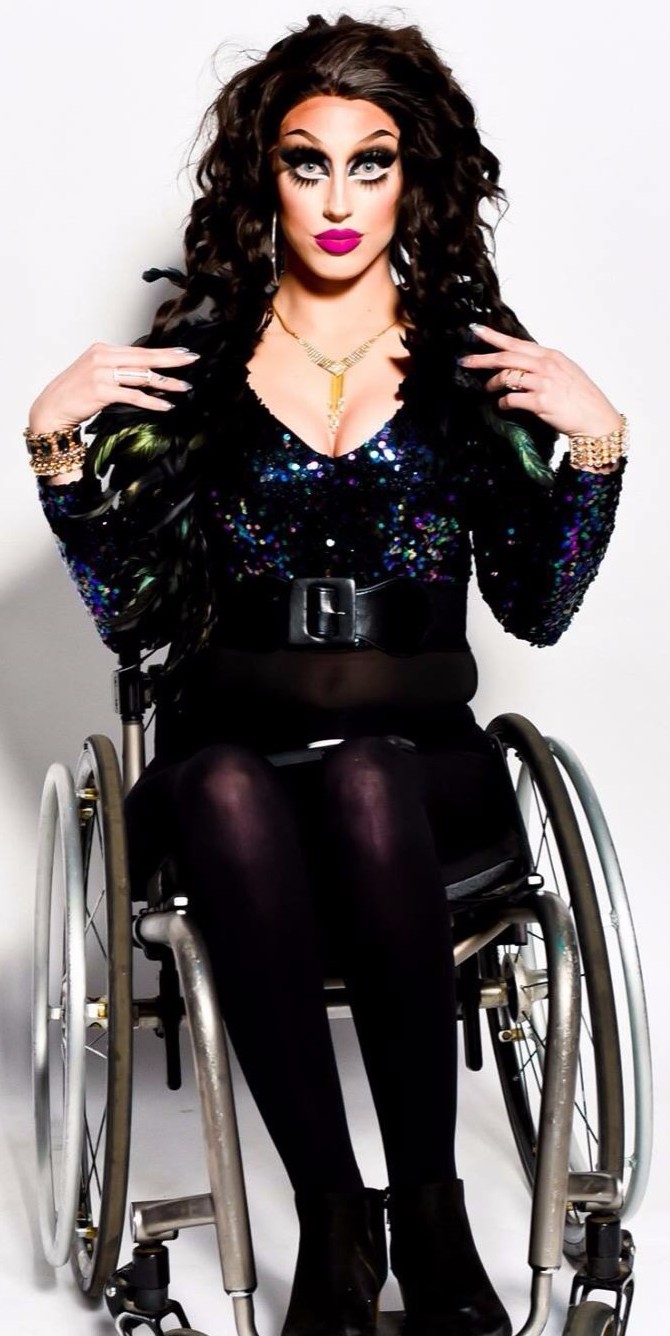
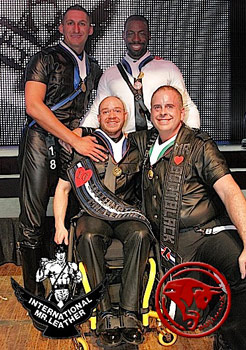
Gay Autistic
Comedian
Blind and Gay Man Discovers He's Not Alone
Out: Opera Singer Inspires With
Her Story
Being Blind and Gay
Autistic LGBTQ Public Figures Providing Essential
Representation
Dark Disabled Stories:
Hard Truths About Queer People With Disabilities
Matthew and Paul
Short Film: The Way He Looks
You
Tube: Do You Dream in Color?
Author Lucy Webster: Similarities Between Experiences of
Being Queer and Being Disabled
Blind LGBTQ Pride
International
Dating a Blind Gay Person
Try Smiling
Washington Post: Laurie Rubin Describes Her World of
Color
Hell No: Ingrid Michaelson ASL Music Video
Blind and Gay Man Discovers He's Not Alone
Video: Push Girls
Gay with Cerebral Palsy: Too Gay for Disabled
People, Too Disabled for the Gays
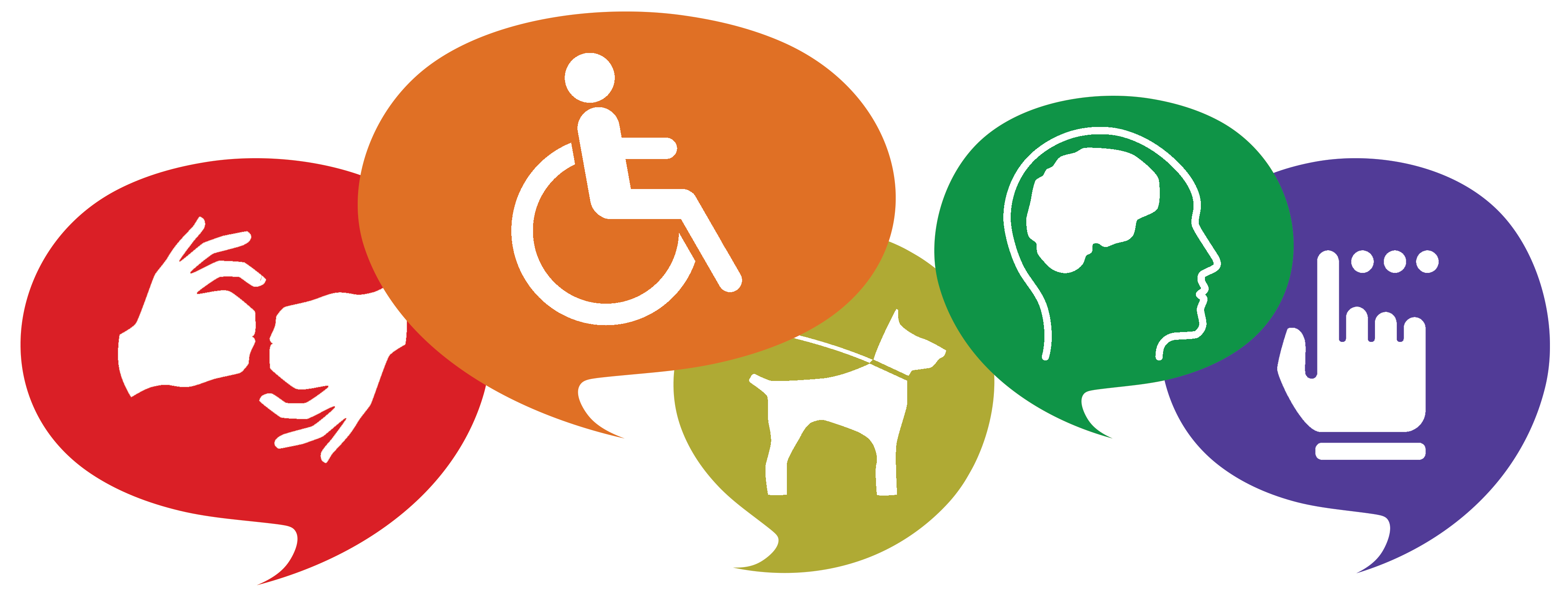
Celebrities: LGBTQ
People and Disabilities
|
Frida
Kahlo - Artist
Laurie
Ruben - Opera Singer
Peter Beach Morier
- Author
Geri
Jewell - Writer
Justin
Chappel - Political Activist
Aaron
Philip - Model
Umber
Ghauri - Make-Up Artist
Dino
Petrera - Actor
Jennifer
Restle - CFO, Educator
Bethany Stevens - Educator
Riva Lehrer - Artist
Josh
Feldman - Actor
Andrew
Gurza - Activist
A Andrews - Author
Reggie
Greer - White House Advisor
Kamden
Romano - Triathlete

|
Jessica Kellfren-Fozard - Educator, YouTuber
Dr.
Laura Rifkin - Professor, Therapeutic Recreation
Specialist
Leah
Lakshmi Piepzna-Samarasinha - Artist, Author
Jess
Thurber - Communication Designer
Lucy
Webster - Author
Tiphany Adams - Model, Actor, Speaker
Sky
Heyn Cubacub - Designer, Artist
Melissa
Yingst - Journalist
Nomy Lamm - Musician, Filmmaker
Patrick
Califia - Writer
Kay Ulanday Barrett -Artist
Eli Claire
- Artist
Robert
Andy Coombs - Photographer
Eva
Sweeney - Educator
Dandy
Doodlez - Artist, Illustrator
Julian
Gavino - Writer, Activist
Chella Man
- Fashion Model

|
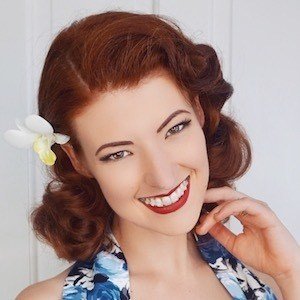
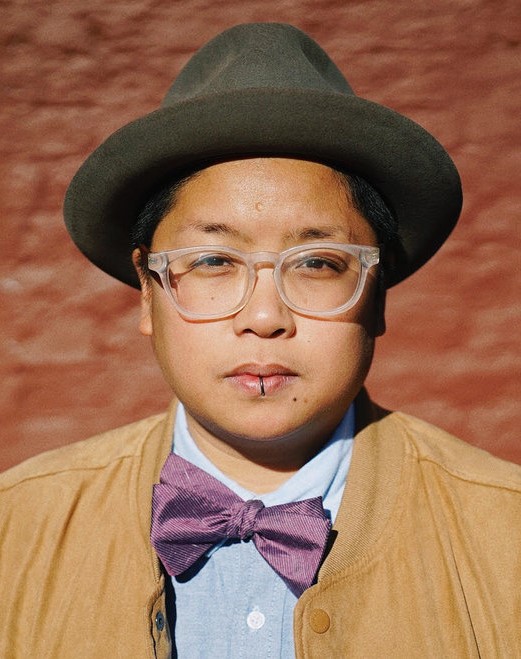
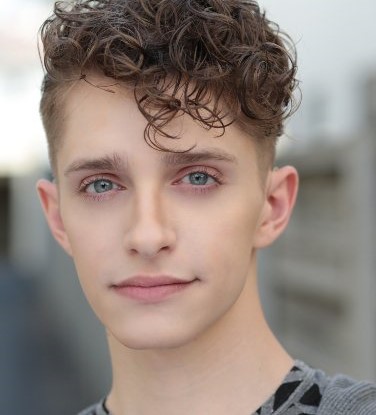
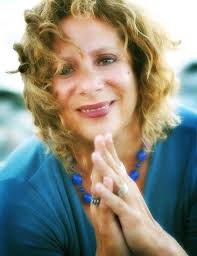
Infographic: LGBTQ People With Disabilities
Honoring LGBTQ People With Disabilities
LGBTQ Disability Activists Who are Changing the World
One Fight at a Time
LGBTQ Disabled Women in History
Alex Mitchell on
BGT: Gay and Autistic
One-Third of LGBTQ Adults
Identify as Having a Disability
Films and Shows With Messy, Amazing, Real
LGBTQ Disabled Characters
Excluded: Queer and Disabled
Signing LGBTQ
Activists Who Are Disabled and Transgender
Video Roundtable: Disability, Sex, Relationships, Dating
Disabled LGBTQ Creatives:
Imagining a Better Tomorrow
Influential Disabled LGBTQ Activists
Deaf YouTuber and Her Wife Go Viral Sharing Their
Remarkable Family Journey

LGBTQ Folks With
Disabilities: Inclusivity and Intersectionality
People
with disabilities in the LGBTQ community represent a
unique and often overlooked intersection of identities.
These individuals navigate the complexities of both
their disability and their sexual orientation or gender
identity, facing distinct challenges that may not always
be fully understood or acknowledged by either group.
One of the primary challenges faced by people with
disabilities in the LGBTQ community is the lack of
accessibility in spaces that are meant to be inclusive.
LGBTQ pride events, social gatherings, and support
groups may not always accommodate the physical or
sensory needs of people with disabilities, leading to
exclusion or isolation. This exclusion can be
particularly harmful, as it compounds the already
existing marginalization that people with disabilities
often experience in society.

Additionally, there are specific stigmas that affect
disabled LGBTQ individuals. Society tends to have a
narrow view of both disability and sexuality, often
seeing people with disabilities as asexual or incapable
of forming romantic or sexual relationships. LGBTQ
people with disabilities may face double
discrimination—one for their disability and another for
their sexual orientation or gender identity. This can
lead to feelings of invisibility and the need to
constantly prove their right to love and be loved, and
to express their gender identity or sexual orientation
freely.
Moreover, disability and LGBTQ identities are often
shaped by different forms of oppression. People with
disabilities face societal barriers such as physical
inaccessibility, healthcare inequities, and economic
hardships. LGBTQ individuals, on the other hand, deal
with stigma around their sexual and gender identities,
and sometimes encounter violence or discrimination. The
combination of these challenges creates a compounded
form of marginalization for those who live at the
intersection of both identities.
Despite these obstacles, many disabled LGBTQ individuals
have found strength in their communities. Advocacy
groups, such as the Disability Justice movement, have
increasingly recognized the need to include LGBTQ+
voices, emphasizing the importance of intersectionality.
The push for more accessible LGBTQ spaces, as well as
greater representation in media, arts, and politics, has
brought attention to the lived experiences of disabled
LGBTQ individuals. These efforts are vital in breaking
down barriers and building a more inclusive society for
all.
In conclusion, the lives of people with disabilities
within the LGBTQ community are shaped by complex layers
of identity and challenge. By recognizing and addressing
the specific needs and struggles of disabled LGBTQ
individuals, we can foster greater inclusivity and
understanding. The journey towards full acceptance for
everyone, regardless of their sexual orientation, gender
identity, or ability, is ongoing, but it is one that can
be navigated through awareness, advocacy, and
solidarity.
Team LGBTQ Currently Has 10th Most Golds at Paris
Paralympics
Hailey Danz Wins Triathlon at Her Third Paralympics,
Giving Team LGBTQ its Fifth Gold in Paris
Italian Sprinter Valentina Petrillo: First Out
Transgender Paralympian
Alex Mitchell on
BGT: Gay and Autistic
Films and Shows With Messy, Amazing, Real
LGBTQ Disabled Characters
Author Lucy Webster: Similarities Between Experiences of
Being Queer and Being Disabled
Deaf YouTuber and Her Wife Go Viral Sharing Their
Remarkable Family Journey
Dickie Hearts: Paving the Way for a Rainbow of Deaf
Stories
Mother of Disability Rights Movement, Judy Heumann Dies
at 75
Disabled LGBTQ Activists and Advocates Who You Need to
Know
Daniel Durant Celebrates Deaf and LGBTQ Communities on
DWTS
Nyle DiMarco: Role Model for Deaf and LGBTQ Communities
Tokyo Paralympic Games Welcomes Record Number of LGBTQ
Athletes
Jillian Mercado on Repping Queer Disabled Latinx
Visibility
LGBTQ People Living With Disabilities
Disabled LGBTQ Creatives Imagine a Better
Tomorrow
Paul and Matthew
A message
from Paul, a blind gay man, about his relationship with
Matthew...
As a
person with gradual vision loss, I had only been using a
white cane for 2 years when I met Matthew. Honestly, I
should have been using one much earlier in my life, but
I struggled to accept it. Mostly because I didn’t want
to “look disabled” and draw attention to myself. I felt
embarrassed and lesser-than; all the things a disabled
person grapples with at some point on their journey.
Eventually, my safety became a priority and I applied
for cane training. It was a life-changing decision in
many ways. It allowed me to be more independent, and it
forced me to get comfortable with having a visible
disability. It wasn’t always easy, and there were some
days I didn’t leave my apartment.
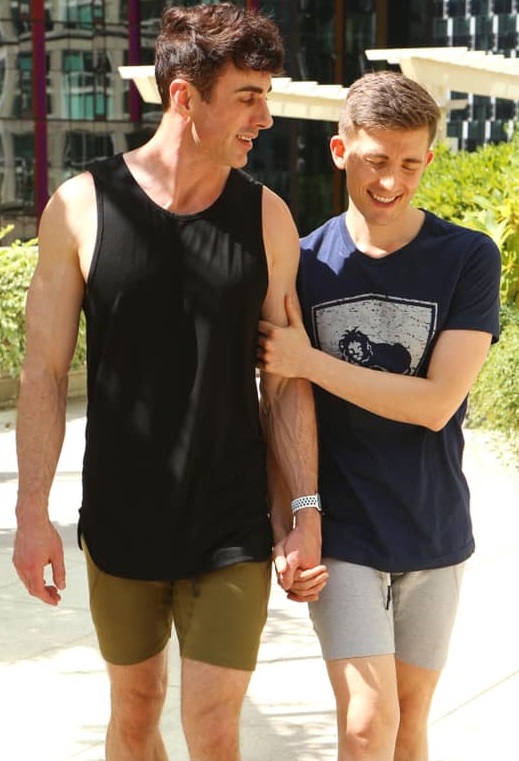
But
when Matthew came into my life, something rather
unexpected happened: I got a seeing-eye boyfriend! I
hadn’t anticipated the benefits of being able to
hold hands and link arms with a fully sighted human
being. I could tuck my cane away and let Matthew
guide us through the busy streets of Seattle, the
even busier streets of New York City, and all the
airports in between.
One
year ago, my seeing-eye boyfriend became my
seeing-eye husband and together we’ve traveled to
Mexico, Canada, Australia, and all over the United
States. Always hand-in-hand while Matthew describes
the various sights around us (that’s something he’s
very good at doing!)
Another thing he’s good at doing is encouraging me
to use my cane for independence, and not to rely on
him too often. And you know something? I no longer
feel embarrassed or lesser-than. I actually feel
pride in my disability. And I owe so much of that to
my Matthew.
Autistic LGBTQ Public Figures Providing Essential
Representation
Video: Push Girls
LGBTQ People with Developmental Disabilities
Video Talk: Gay, Disabled, and Just Fine
Deaf Queer Resource
Center
Video Roundtable: Disability, Sex, Relationships, Dating
Jessica and Claudia: Dating a Disabled Lesbian
Living With a Disability
in the Gay Community
Born Without Limbs - Now I'm Marrying My Dream Man
Andrew Gurza on Queer Disability and Sex
Author Lucy Webster: Similarities Between Experiences of
Being Queer and Being Disabled
Nancy Eves: Autistic, Trans, Non-Binary
Being Blind and Gay
Push Girls: Tiphany Adams
Film: Concerto for Abigail
Gay and Disabled: Nothing Can Stop Me
3000 Attend NY's First Disability Pride Parade
Matthew and Paul
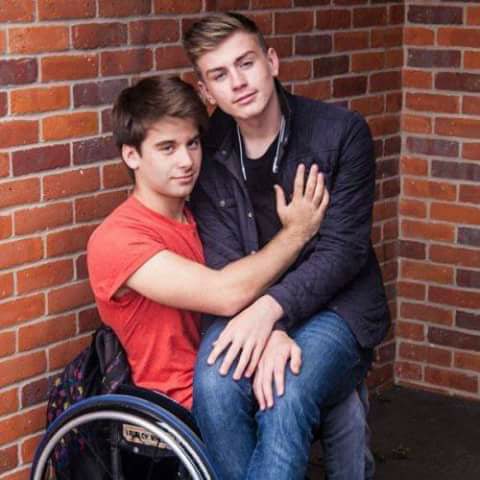
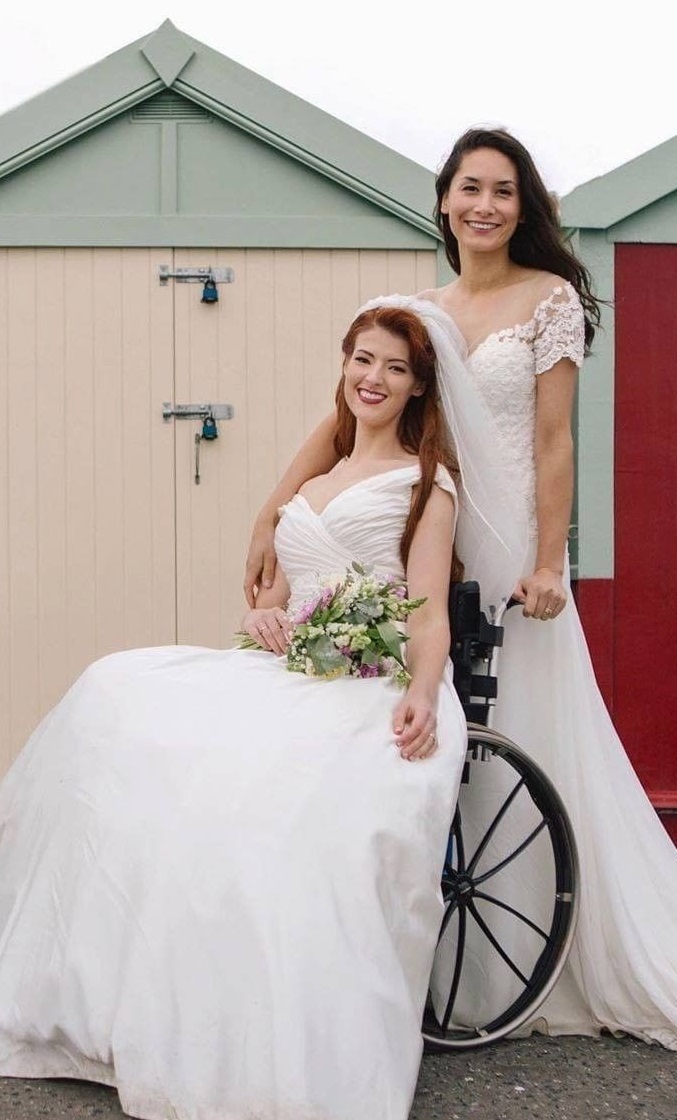 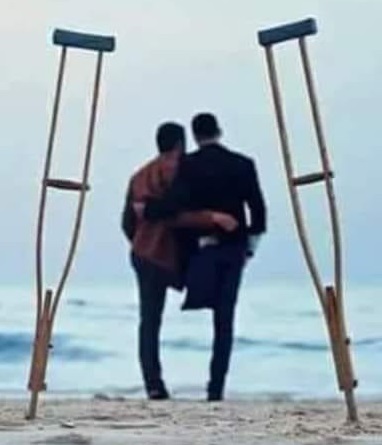
Report: LGBTQ
People and Disabilities
The
Americans with Disabilities Act was passed and signed
into law by President George HW Bush on July 26, 1990.
The ADA is a civil rights law that protects people with
physical or mental impairments that substantially limit
major life activities from discrimination in all areas
of public life, including jobs, schools, transportation,
and all public and private places that are open to the
general public. People living with HIV are also
protected from discrimination by the ADA. Research shows
that LGBTQ people are more likely than the general
population to have a disability and face systemic
challenges finding employment, community, and more. Even
30 years after the passage of the ADA, more work is
needed to ensure that people with disabilities,
including LGBTQ people with disabilities, have full and
equal access in American society.
An
Estimated 3-5 Million LGBTQ People Have Disabilities
2 in 5 transgender adults
1 in 4 lesbian, gay, bisexual adults
...compared to 27.2% of the overall population
40% of bisexual men
36% of lesbian women
36% of bisexual women
26% of gay men
...reported having a disability

MAP Report: LGBTQ People With Disabilities
Meet the Triathlete Who Just Happens to be Transgender
and Deaf
Incredible Makeup Artist With No Arms
Alex Mitchell on
BGT: Gay and Autistic
Deaf YouTuber and Her Wife Go Viral Sharing Their
Remarkable Family Journey
Special: Gay Disabled
Comedy TV Series
Disabled Queer Man Hires Sex Workers
Blind and Gay Man Discovers He's Not Alone
Influential Disabled LGBTQ Activists
Groundbreaking Queer Autistic Characters paving the Way
for Visibility
Disabled LGBTQ Activists Redefining Sex and Sexuality
Jessica: Disabled and Gay
Unique Challenges for LGBTQ People with Disabilities
Limited access to LGBTQ-inclusive and fully accessible
services. Accessing affordable, accessible, and
inclusive health care, community services, and more is
challenging for LGBTQ people with disabilities. This is
particularly true for people in rural communities. Not
only are people living in rural areas more likely to
have disabilities, but the distances needed to travel to
find LGBTQ-competent and fully accessible service
providers, community programming, and more placed LGBTQ
people with disabilities in rural communities at a
greater risk for isolation and increased discrimination.
Bullying
and exclusion for LGBTQ youth with disabilities. LGBTQ
youth with disabilities report high
rates of harassment and are more likely to be bullied or
harassed than students without disabilities. LGBTQ
students with disabilities are more likely to be
disciplined in school and to drop out of school,
compared to LGBTQ students without disabilities.
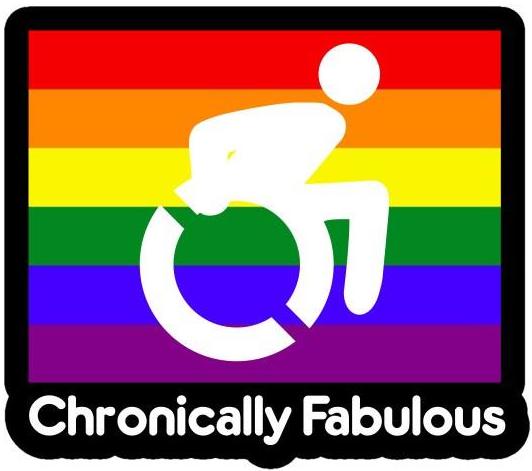
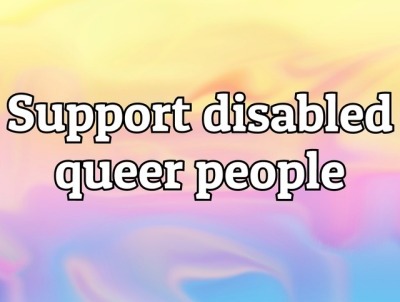
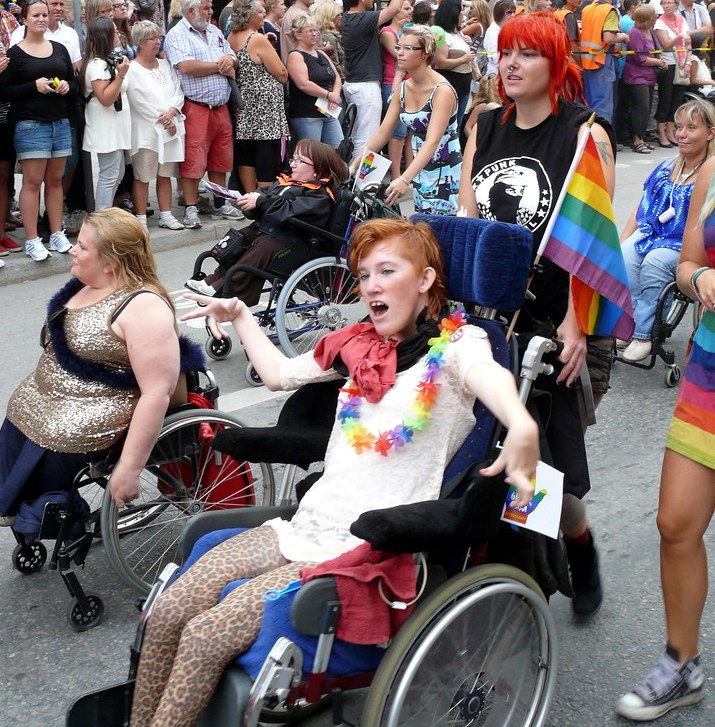
LGBTQ Disability Activists Who are Changing the World
One Fight at a Time
Gay Autistic
Comedian
Mobility Aids: Time to Sit Down
Autistic LGBTQ Public Figures Providing Essential
Representation
Inter-Abled Relationships: Benefits of Dating a Disabled
Person
Interpreting Queer Words in ASL
Disability and Dating: Sexy, Seated, and Single
Disabled Queers Facebook Page
Nyle DiMarco: Role Model for Deaf and LGBTQ Communities
Dino Petrera: Gay and Hearing Impaired
Jessica: People Accept My
Gayness But Not My Disabilities
Added
barriers to employment. People with disabilities report
incredibly high rates of employment discrimination and
unemployment. In 2017, only 36% of adults with a
disability were employed compared to 77% of those
without a disability. This discrimination compounded by
the discrimination based on sexual orientation and
gender identity, as well as racial and ethnic
discrimination, means that LGBTQ people with
disabilities may struggle to find and keep jobs, and to
access support services like unemployment benefits,
leaving them and their families economically insecure.
Invisibility within both communities. LGBTQ people with
disabilities often report that it is challenging to have
their identities fully recognized. In spaces focused on
disability, their unique experiences as LGBTQ people may
not be recognized. And in LGBTQ spaces, services and
facilities may not be inclusive or accessible, including
having accessible buildings or restrooms, ASL
interpretation and/or CART captioning for deaf or hard
of hearing people, and more.
LGBTQ
people are more likely to experience mental health
conditions that can impact daily life. Mental
health conditions can potentially impact a person’s
daily life to such an extent that it is a disability in
the eyes of the law, medical professionals, and/or the
individual living with that condition. Research finds
that LGBTQ people are more likely to have a mental
health disorder in their lifetimes, including mood
disorders such as depression, anxiety, and substance use
disorders. A growing body of research links experiences
of discrimination based on sexual orientation, gender
identity, as well as race, ethnicity, and disability
status, prejudice, barriers to competent health care,
lower rates of health insurance, poverty, experiences of
violence, and more to these health disparities.
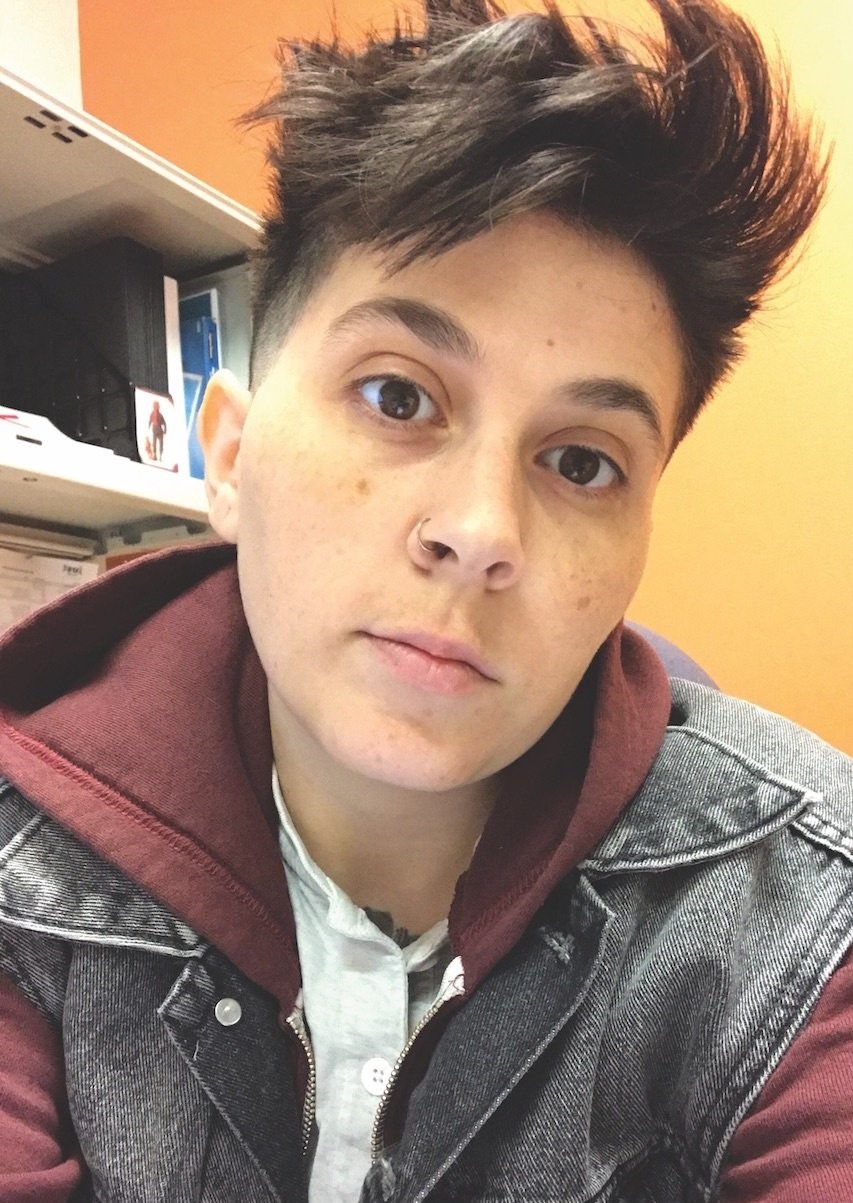
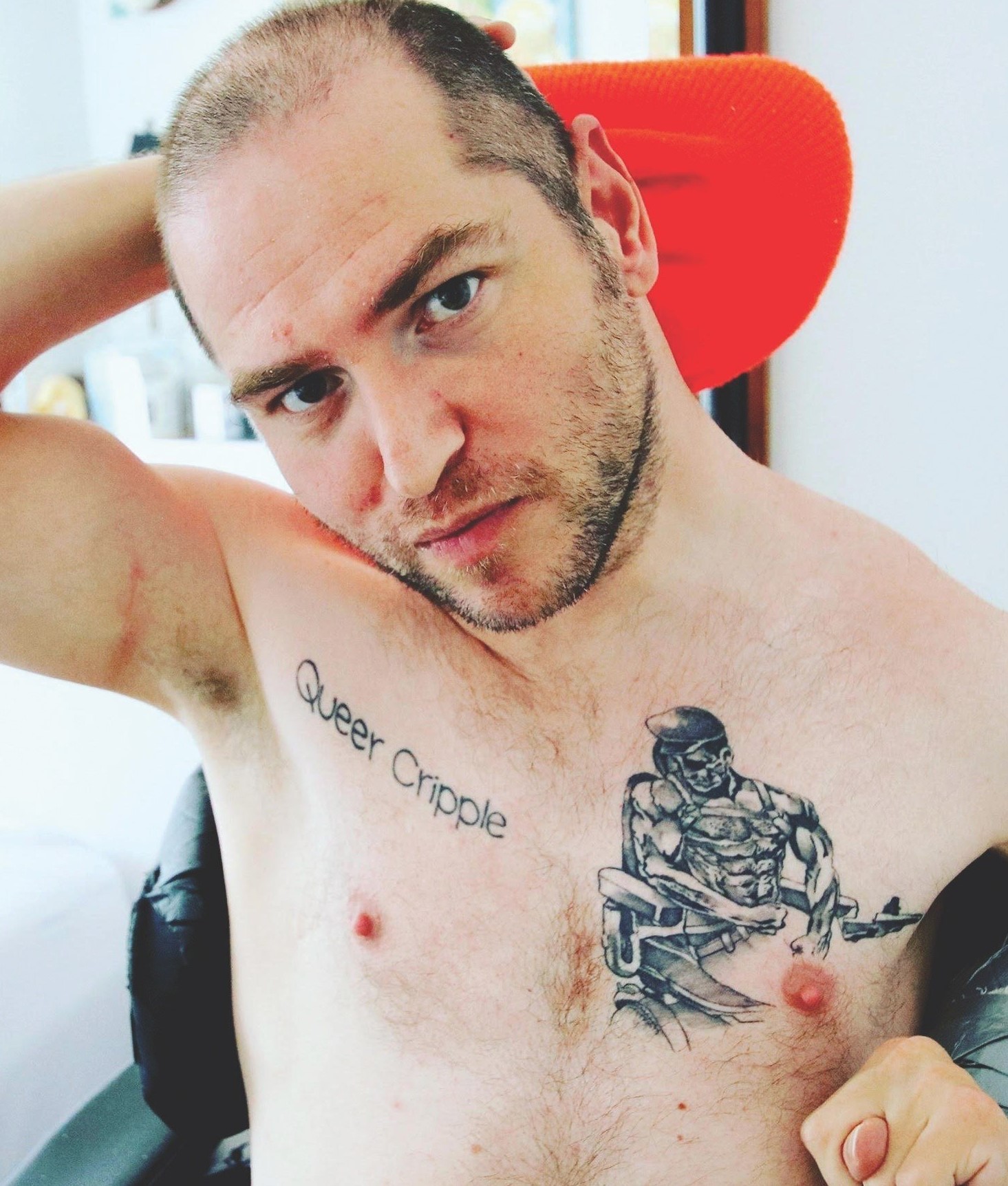 
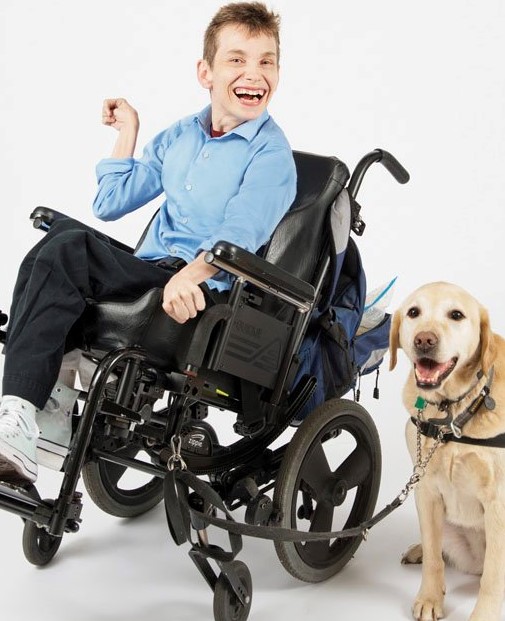
LGBTQ People with Developmental Disabilities
Netfilx Series: Queer and Disabled
PBS Video: Differently Abled and Bisexual
Alex Mitchell on
BGT: Gay and Autistic
Black, Gay, Autistic and
Beautiful
Deaf Queer Resource
Center
Being Blind and Gay
Jessica: Disabled and Gay
Try Smiling
Embracing My Queer
Disabled Identity
MAP Report: LGBTQ People With Disabilities
Laurie Rubin:
Blind Lesbian Opera Singer
Blind since birth, mezzo-soprano
Laurie Rubin tells her empowering story in memoir Do
You Dream in Color? Insights From a Girl Without Sight.
Acclaimed mezzo-soprano opera singer Laurie Rubin has
been blind since birth, is openly lesbian, and of Jewish
background. What better reason to write a memoir? On
paper, she was, obviously, not your typical everyday
teenager growing up. But with determination and a strong
support system, she continually surpassed and redefined
others’ expectations, both professionally in the music
industry and outside of it.
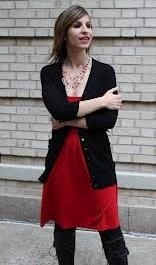
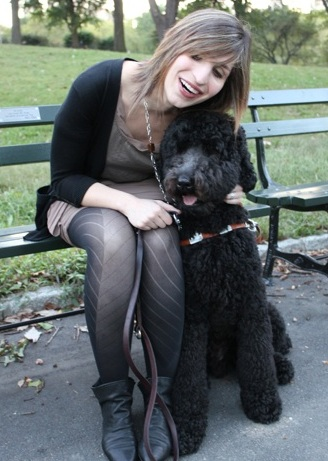
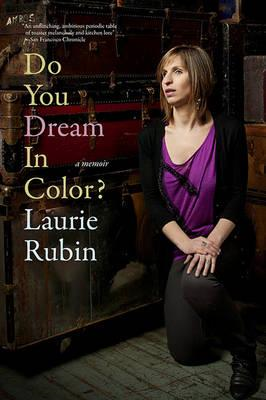
Defying the naysayers since childhood, the lively and
charismatic Rubin released Do You Dream in Color?
Insights From a Girl Without Sight in 2012,
recounting her experiences from childhood to
full-fledged opera singer. An uplifting story about her
journey to follow her dreams, Rubin’s story asks those
universal questions (Who am I? and Where do I fit
in?) while giving an insight into a musical world you
probably know nothing about. Not only does she have a
busy concert schedule, Rubin is also in developing a
curriculum for Yale music (where she earned her master's
degree) that will aim to dispel stereotypes and better
the perceived value of people living with disabilities
by allowing people of all ages and walks of life to
share in the experiences of blindness.
MAP Report: LGBTQ People With Disabilities
Blind and Gay Man Discovers He's Not Alone
Disabled LGBTQ Activists Redefining Sex and Sexuality
Jessica: Disabled and Gay
Mobility Aids: Time to Sit Down
Inter-Abled Relationships: Benefits of Dating a Disabled
Person
Interpreting Queer Words in ASL
Disability and Dating: Sexy, Seated, and Single
Dino Petrera: Gay and Hearing Impaired
Jessica: People Accept My
Gayness But Not My Disabilities
Incredible Makeup Artist With No Arms

Dandy Doodlez:
Artist, Queer, Disabled
Artist
Dandy Doodles is proving you can be disabled, queer and
sexuality active one powerful illustration at a time.
She has opened up about sex, the intersection between
queerness and disability, and why the LGBTQ community is
so inaccessible. Dandy developed Myalgic
Encephalomyelitis (ME), a complex neurological disease
that presents with symptoms in multiple body systems,
around two years ago.
“Overnight, I sort of lost everything in my life. I was
a very active person,” she said. “I was doing a degree,
and I was working for Oxfam. I was doing all these
different things, and it just suddenly struck me down. I
lost the ability to walk, to tolerate light or sound, to
read, to count. I had all of this joint and muscle pain,
and fatigue. I spent about just over a year in the dark
in my room. I couldn’t tolerate any kind of light. I had
to wear my sunglasses in bed. It was it was very, very
extreme."
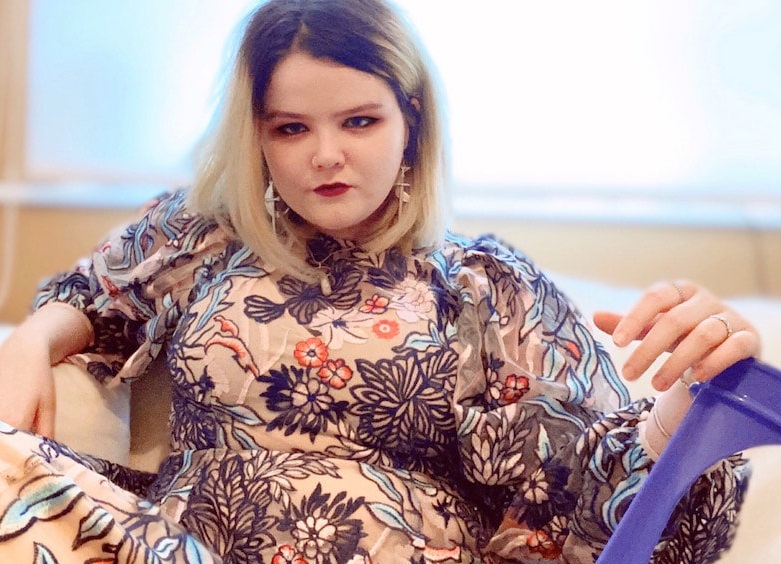
Before she
developed ME, Dandy’s biggest passions were writing
novels and music, and she desperately needed a creative
outlet. At the beginning of 2020, it was suggested to
her that she could start drawing using an iPad. “I found
it was really, is really a great way of expressing
myself,” she said. "Having been isolated for so long, I
didn’t really have a voice. So I started to post these
things on Instagram as a way of connecting with other
disabled people and queer people, just like having that
sense of community. From there it just kind of
exploded.”
Dandy began receiving messages from companies who wanted
to work with her, and was even commissioned by Warner
Brothers and the BBC. But her most recent project she
describes as “astounding”. Sex toy company Lovehoney has
entered into a partnership with disability start-up
Handi to overhaul the taboos on sex and disability
through a new book, titled The Handi Book of Love, Lust
& Disability, which features the stories and poetry of
50 disabled contributors. Dandy was originally
approached to be one of the contributors but while in
talks with Handi, she found herself “offhandedly”
offering to illustrate the entire book, on top of
contributing her story.
Dandy Dodlez: Artist,
Queer, Disabled, Sexually Active
Nyle DiMarco: Role Model for Deaf and LGBTQ Communities
Queer and Disabled: Representation and Accessibility
Disabled World Report: Over One Third of LGBTQ Adults
Identify as Disabled
Matthew and Paul
Gay and Disabled: Nothing Can Stop Me
Respectability: LGBTQ People With
Disabilities
Disability and Dating: Sexy, Seated, and Single
Special: Gay Disabled
Comedy TV Series
Jessica: People Accept My
Gayness But Not My Disabilities
Scholarly Paper:
Intersectionality of Disabilities and LGBTQ Identity
Living With a Disability
in the Gay Community
Born Without Limbs - Now I'm Marrying My Dream Man
Nancy Eves: Autistic, Trans, Non-Binary
Deaf YouTuber and Her Wife Go Viral Sharing Their
Remarkable Family Journey
Influential Disabled LGBTQ Activists
Jessica: Disabled and Gay
Groundbreaking Queer Autistic Characters paving the Way
for Visibility
Deaf Queer Resource
Center
Being Blind and Gay
Try Smiling

HOME
QUEER CAFE
│ LGBTQ Information Network │ Established 2017 |